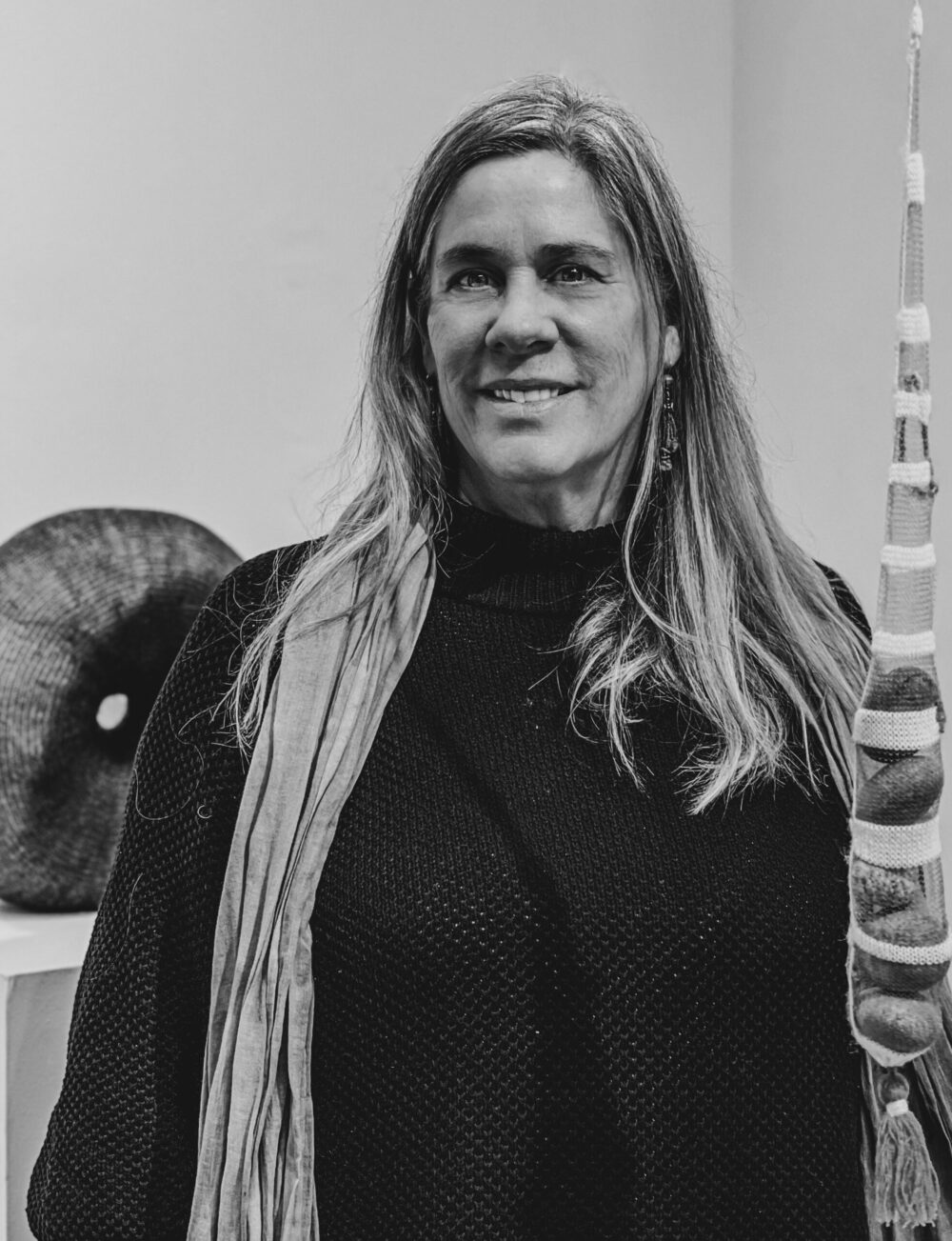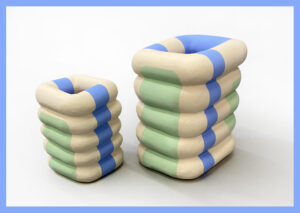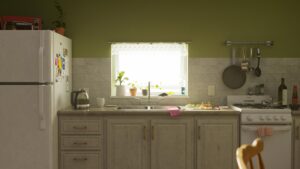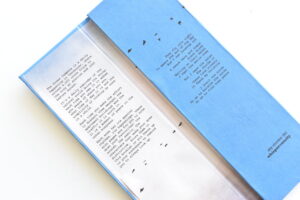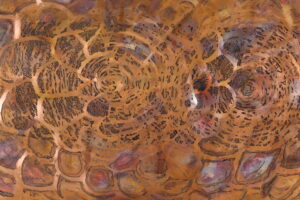Wounded Knitting
january wolodarsky
See it On Campus: Level 1
Visitor InfoExhibition Zone 4 -1st Floor Gallery.
# 4 | Spring 2023
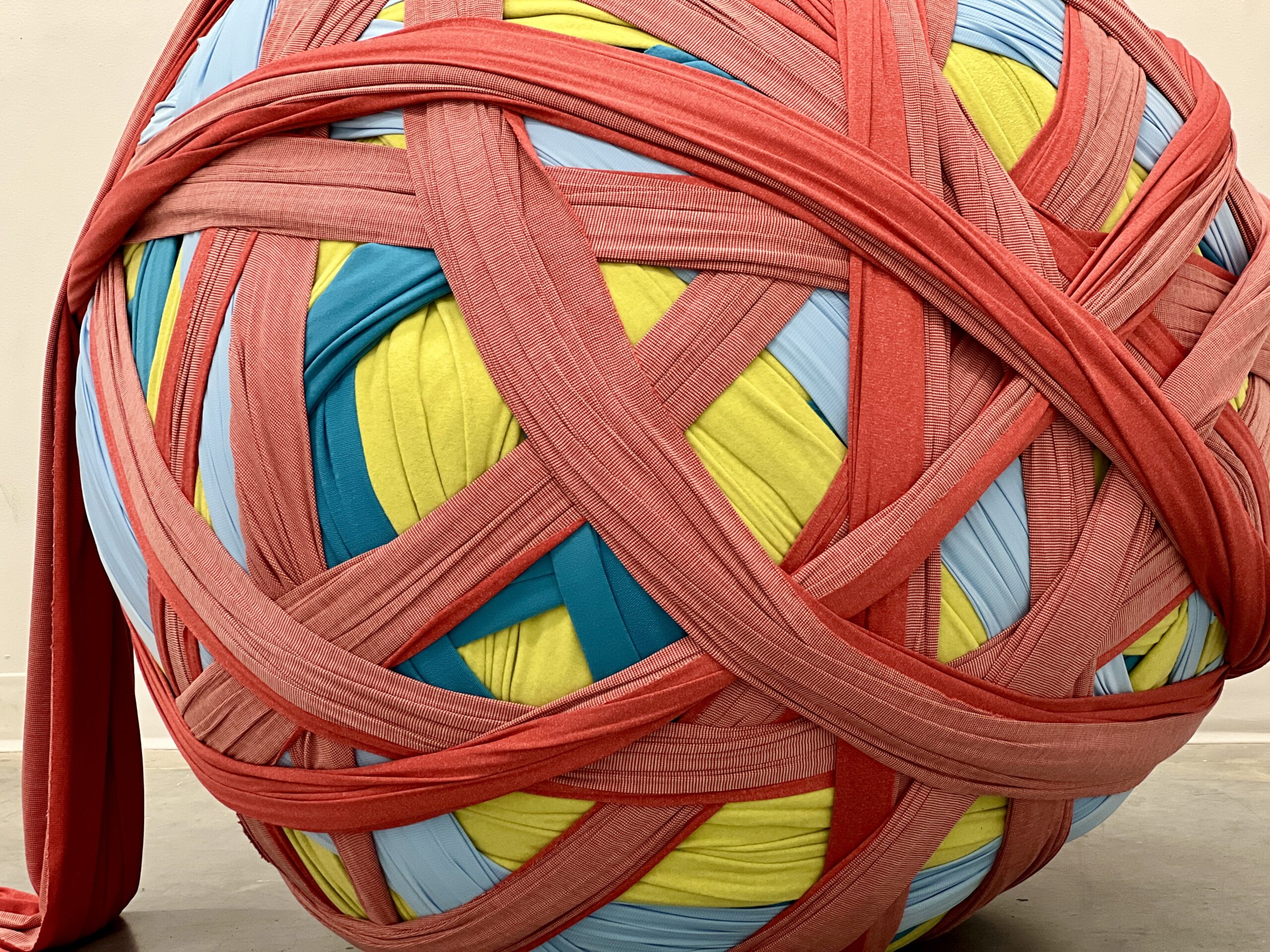
BETWEEN A ROCK AND A HARD PLACE
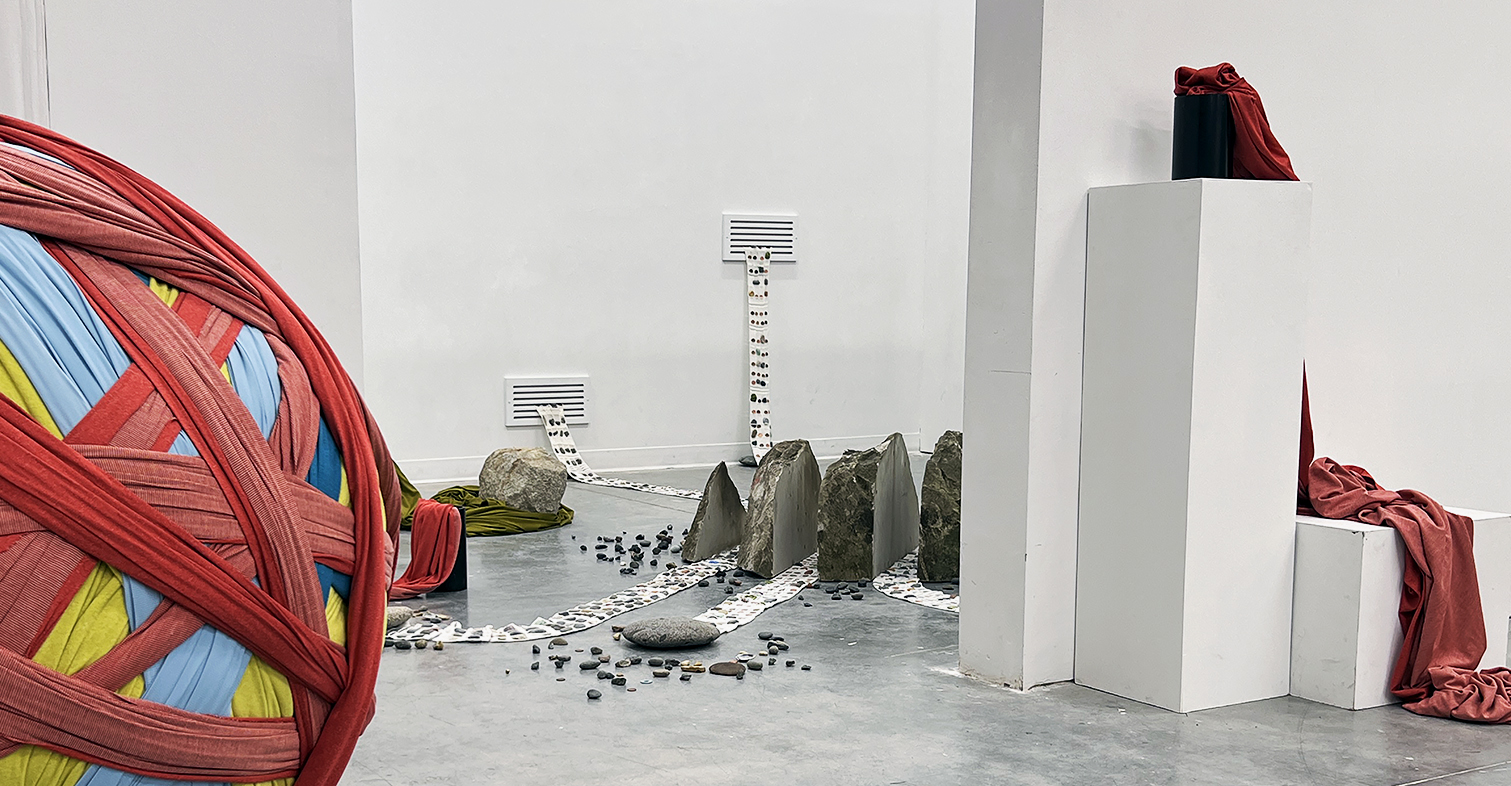
Materials
Haddington Island Andesite boulder, roadside and beach boulders, deadstock industrial jersey of unknown fiber, synthetic and hand dyed wool, monofilament, found beach objects, family coin collection, obsolete Canadian pennies, hardware items, ABS piping, construction gravel, wall vents, keys to unknown locks, river rocks, pebbles, dryer dust, plastic bags.
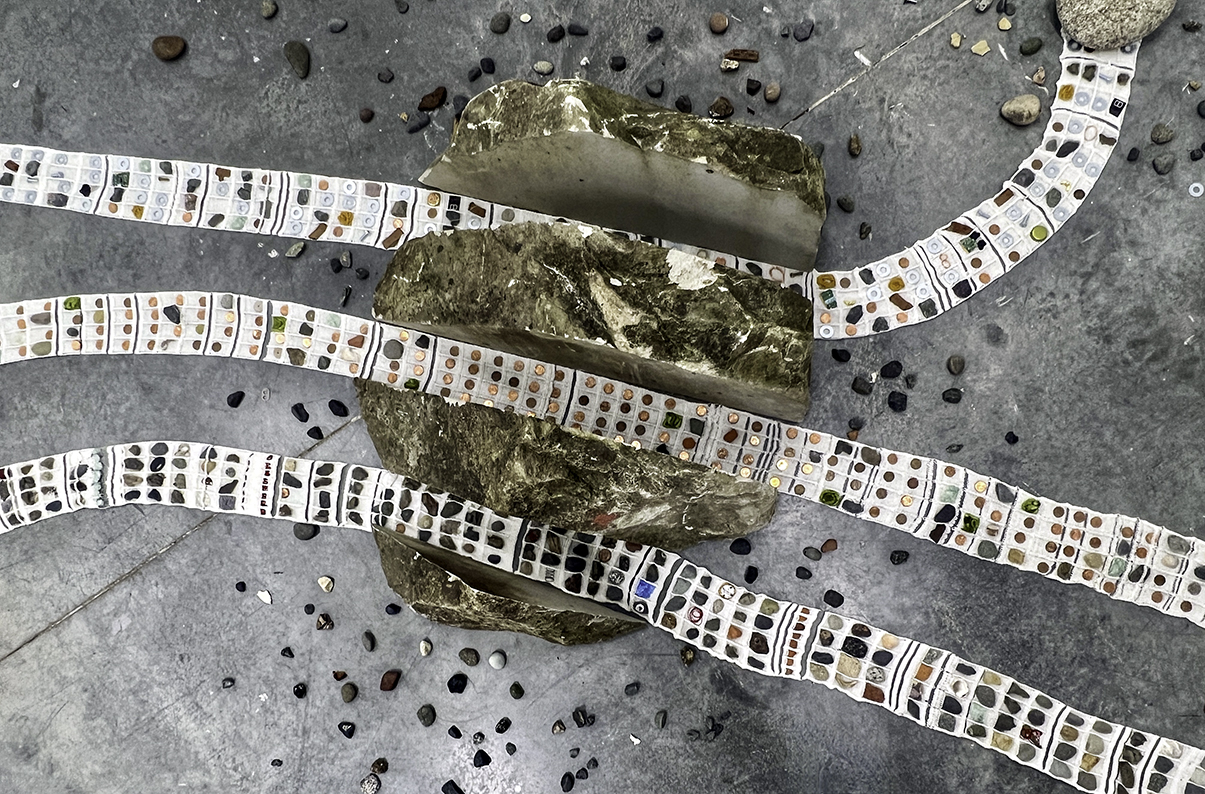
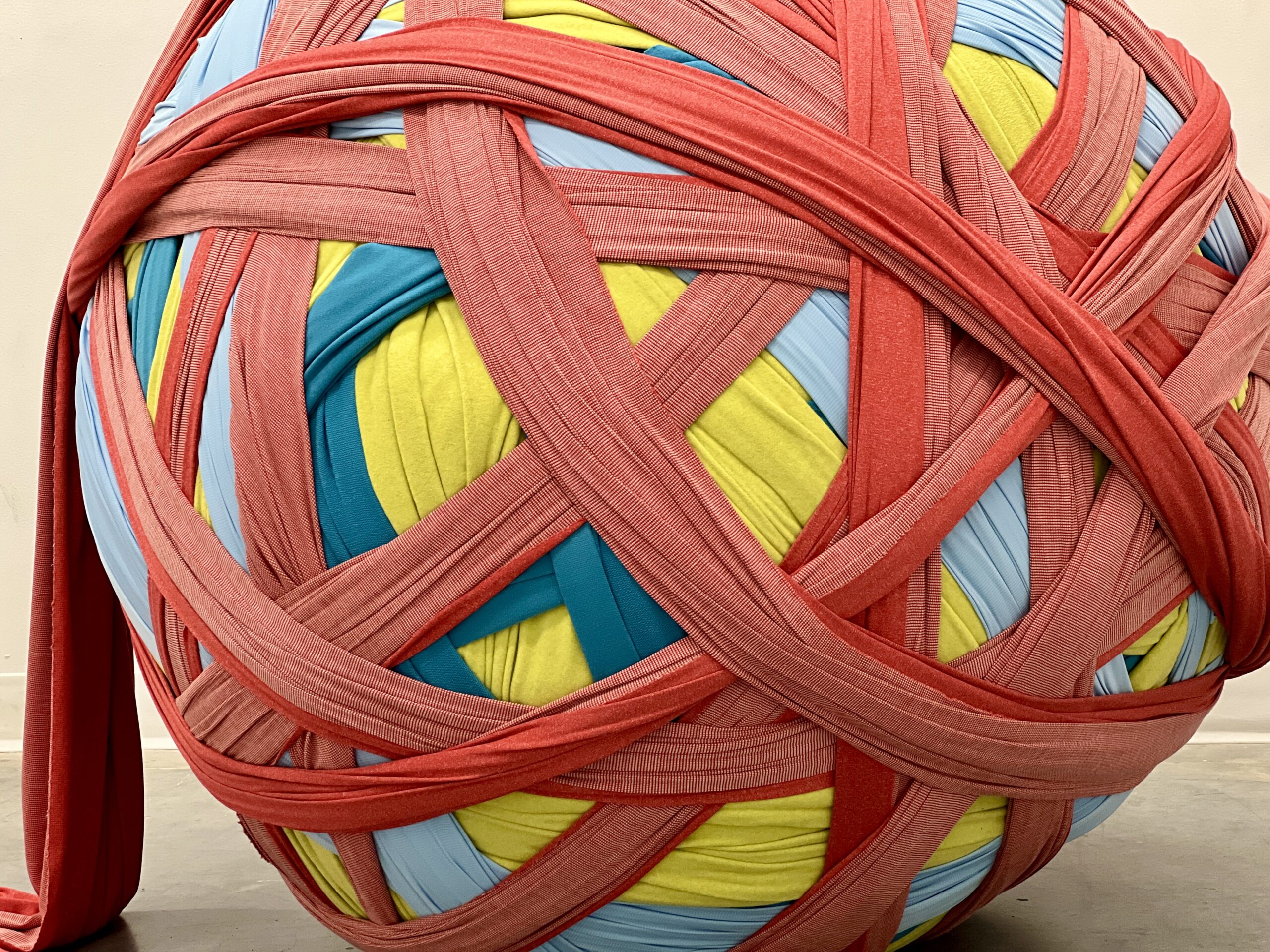
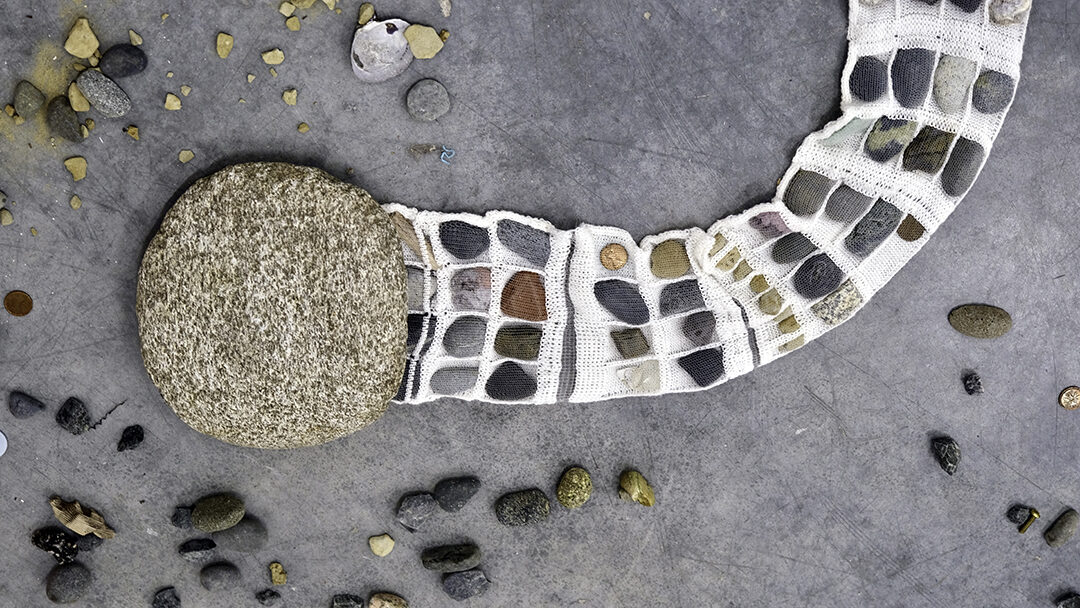
Statement
Between A Rock and a Hard Place, the fourth installation in the Wounded Knitting series is a dialogue between the yin/yang of opposing forces in this era of polarity – hard/soft, natural/synthetic, visual/material, captured/ free, birth/death, place/placelessness, motion/inertia, eternal/ephemeral, individual/community. It reflects on the contrasts and compatibility of the sense of time and place embodied in rocks and yarns. The timelessness, hardness and ancient memory embedded in the rock, compares to the pliable warmth of the yarn alludes to the ephemeral adaptability of human enterprise. In this respect, Between A Rock and a Hard Place is an inquiry into what is valued, goes unnoticed, is presumed useless, or cast away in our recently evolving Plasticene era of rampant capitalist consumerist accumulation, waste, and disposability. Between is about permanence and vulnerability, a visual narrative exploration of what we accumulate and value.
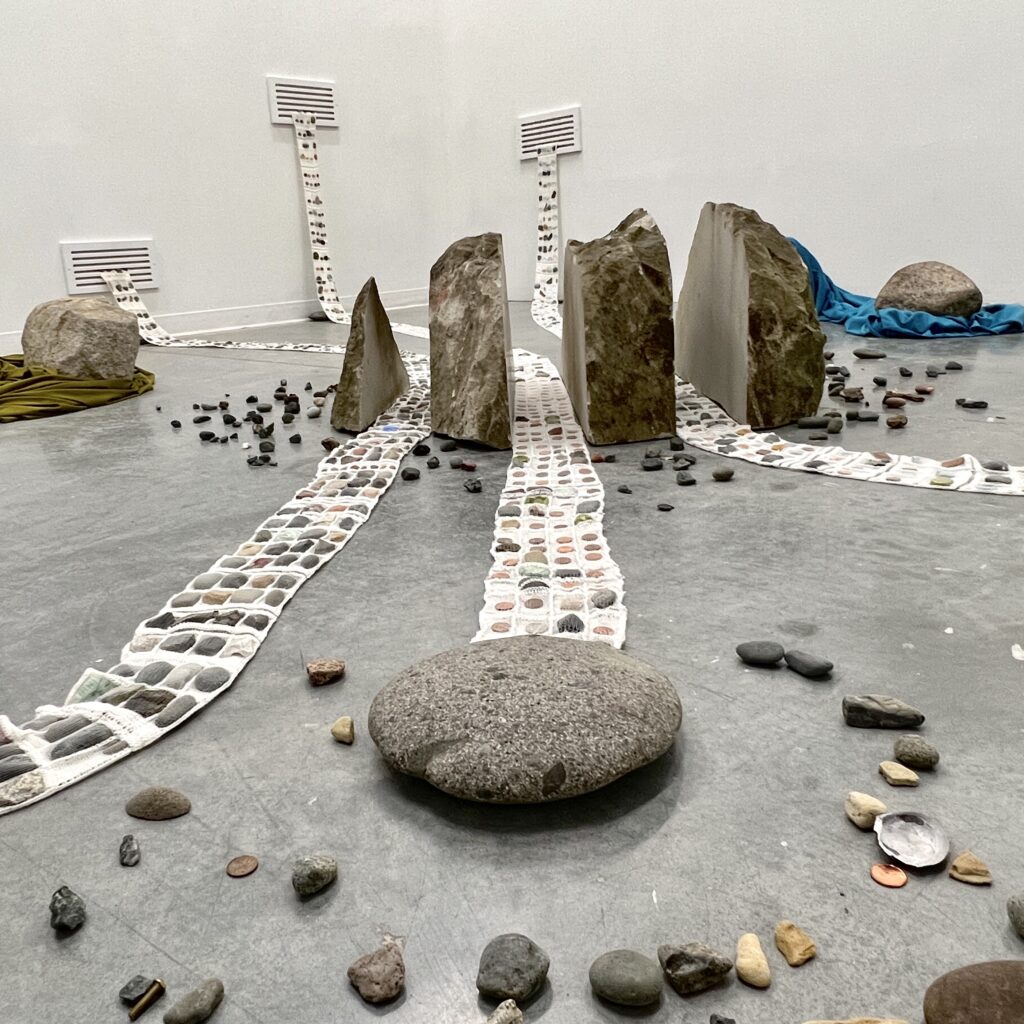
Three thin streams of meticulously crafted, repetitious domestic machine-knitted wool fabric with monofilament pockets encase accumulated items of different domains (coastline, currency, fabrication) catalogue and recognize ordinary forgotten and unnoticed items in an imaginary unscaled landscape that oozes into the gallery through vents, then stretches across the floor, cutting through a displaced ½ ton sliced Andesite boulder (hardness 7.5 out of 10 on the Mohs scale) from Haddington Island on ‘Namgis Territory near Port McNeil. The boulder was formed in the Pleistocene era, 3.7 million years ago, by volcanoes and the movement of tectonic plates, a reminder of the ubiquitous sense of place and ancient knowledge contained in the energy of rocks, their memories of time and space, future, present and past, are simultaneously archived in their presence.

In comparison, The Ball is of a similar weight to the Andesite boulder and is made from 16+ bolts of deadstock fabric of unknown fibres that, so far, have narrowly avoided the landfill. The Ball whimsically manifests the overwhelming, seemingly intractable, expansion of our culture of accumulation. One end of the giant colourful ball leads us through the work, weaving in and out of the floor through plumbing pipes challenging one-way ideas of the colonial/imperial perspectives linearity of space, time and economies in relation to the landscape. Some items that escaped being enclosed are scattered on the floor.
Rocks, mountains and landscapes are temporal archives, narratives of place with no direction; no beginning and no end. Places are enchanted through material encounters and grand geological and cosmological histories that inhabit space with expansive and retractive time. Questioning our being, existence, and mortality in a modernist world, humans organize, rationalize, theorize, socialize, theologize, categorize, monetize – threading our activities through two defining points in time. What wisdom would the rocks offer us if we listen to their voices?
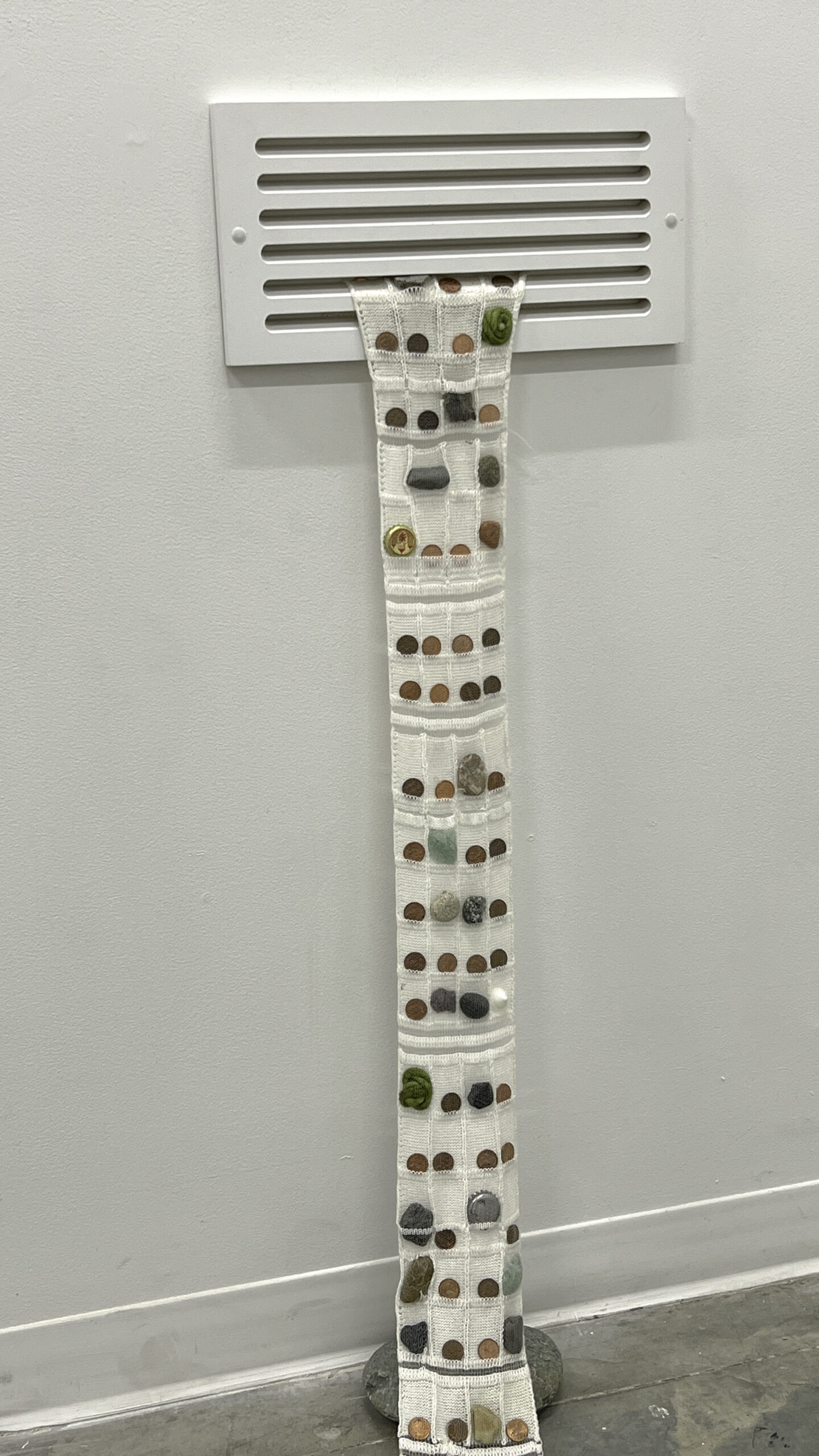
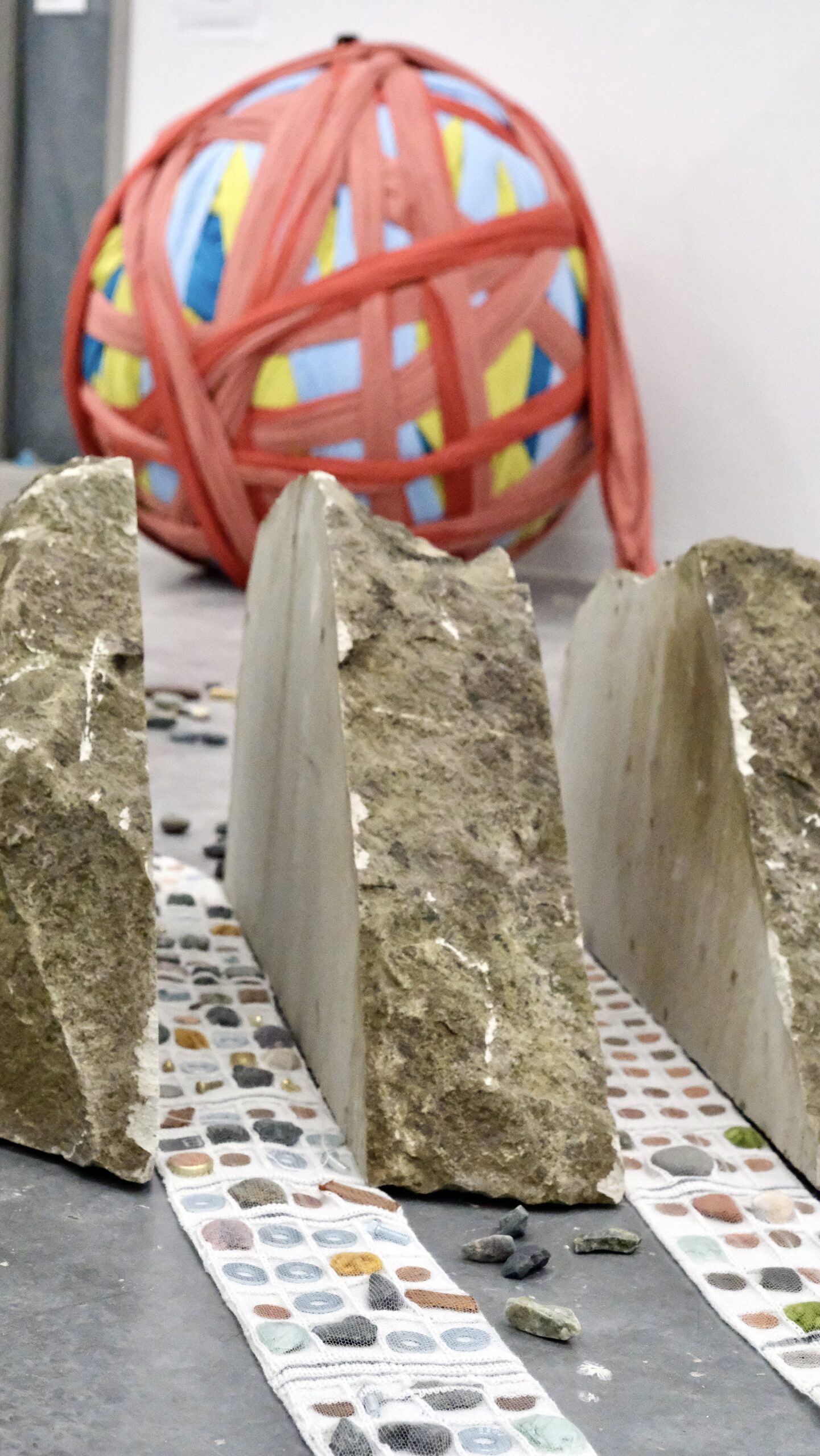
“We can no longer be so naive as to assume that what we see constitutes all there is to see.”
– Phyllis Ghim Lian Chew, “The Dialogue between Yin-Yang CBACACDoncepts and the Bahá’í Faith”
Wounded Knitting # 3 | Autumn 2022
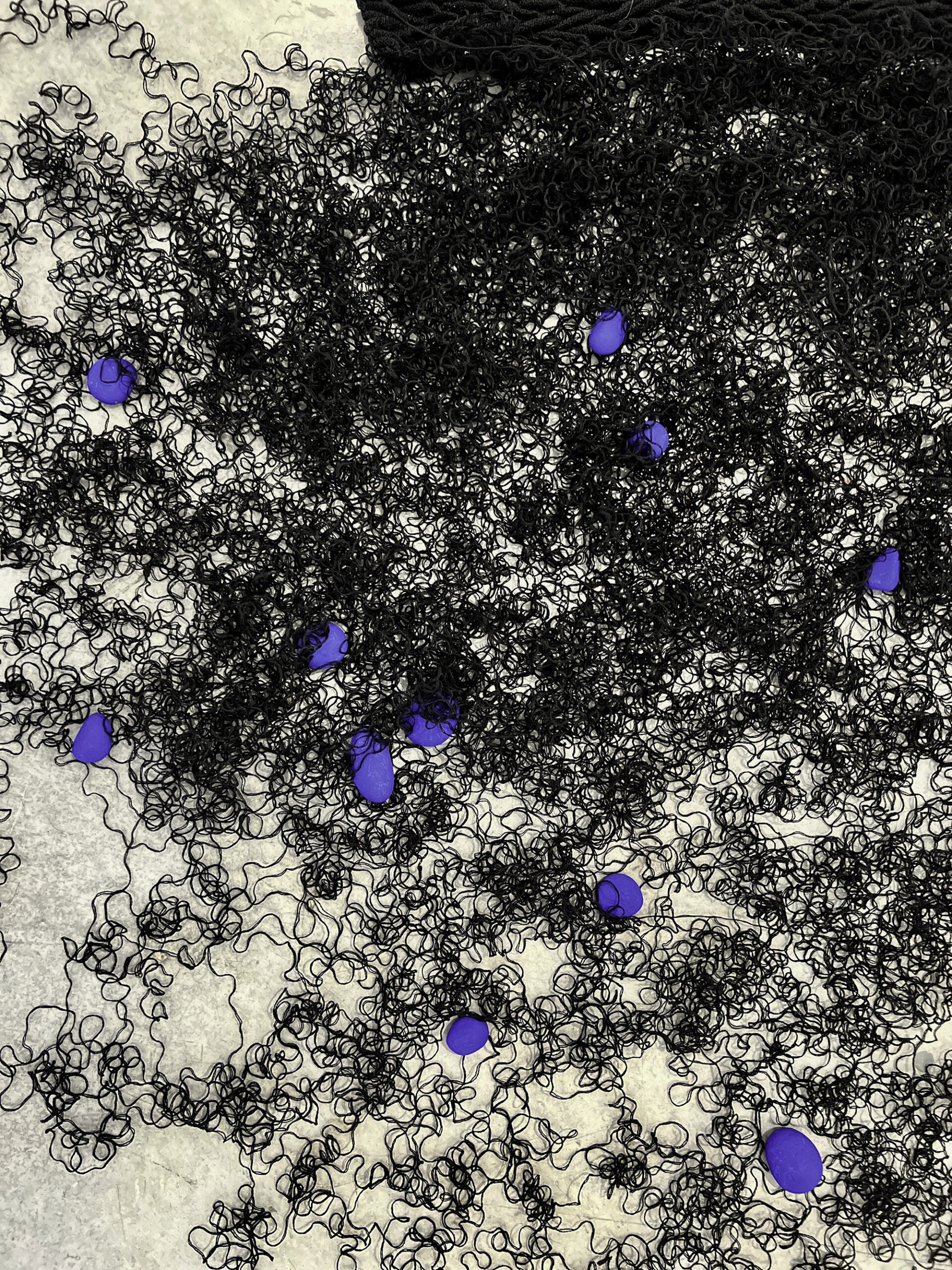
OUT OF PLACE
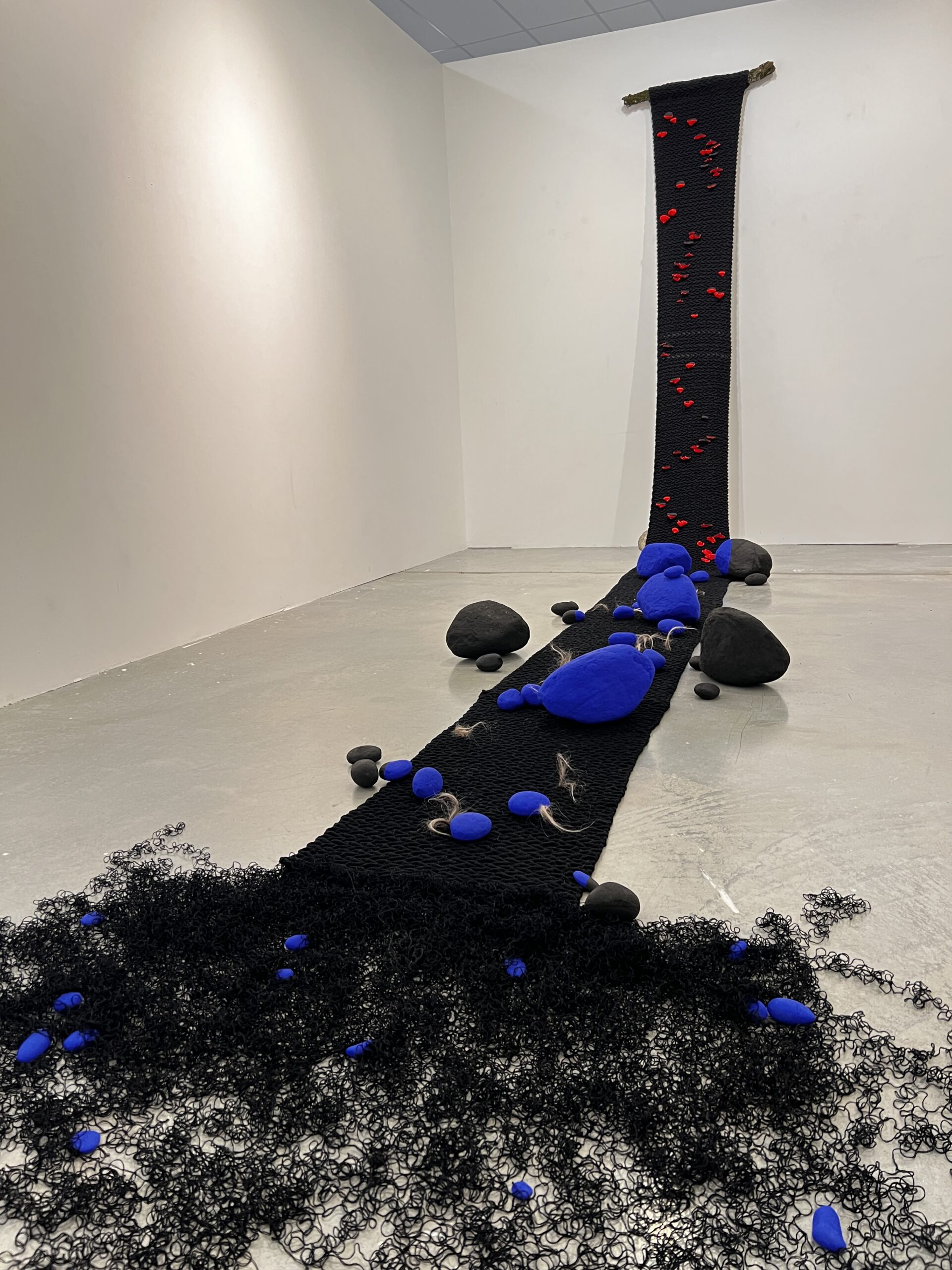
Materials
Merino wool; ocean rock, garden rocks and cast fungi; cast foam; low reflection acrylic paints; salvaged fallen branch from a recent wind storm; pandemic grey hairs; and the energy (oscillating intertwined networks) of life and everyone around me. 20’ x 4’.
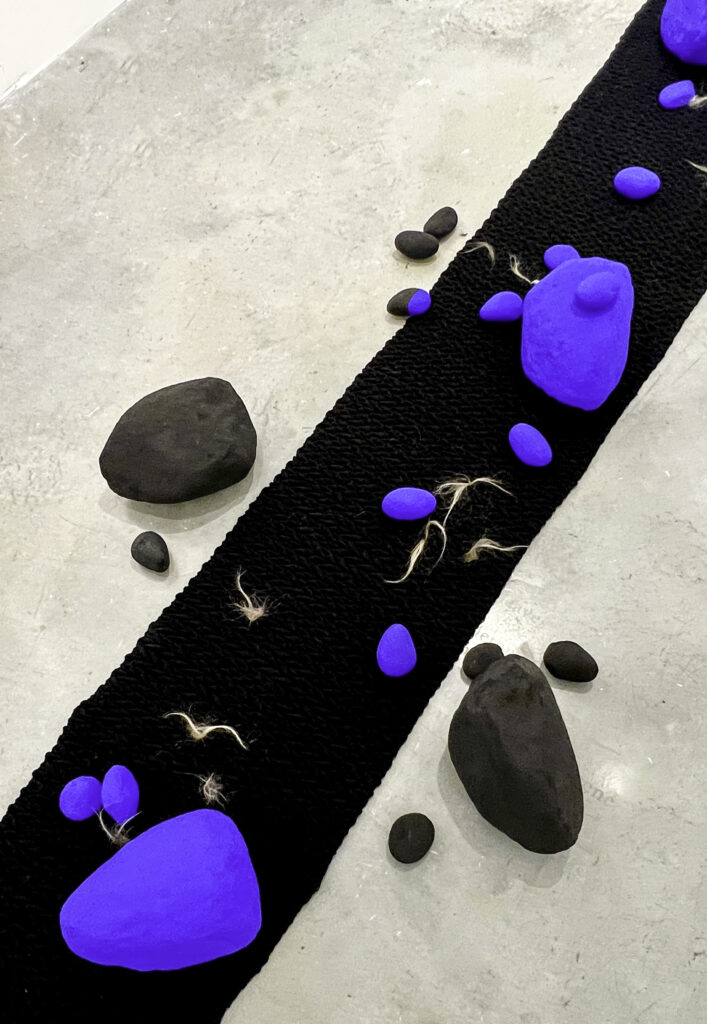
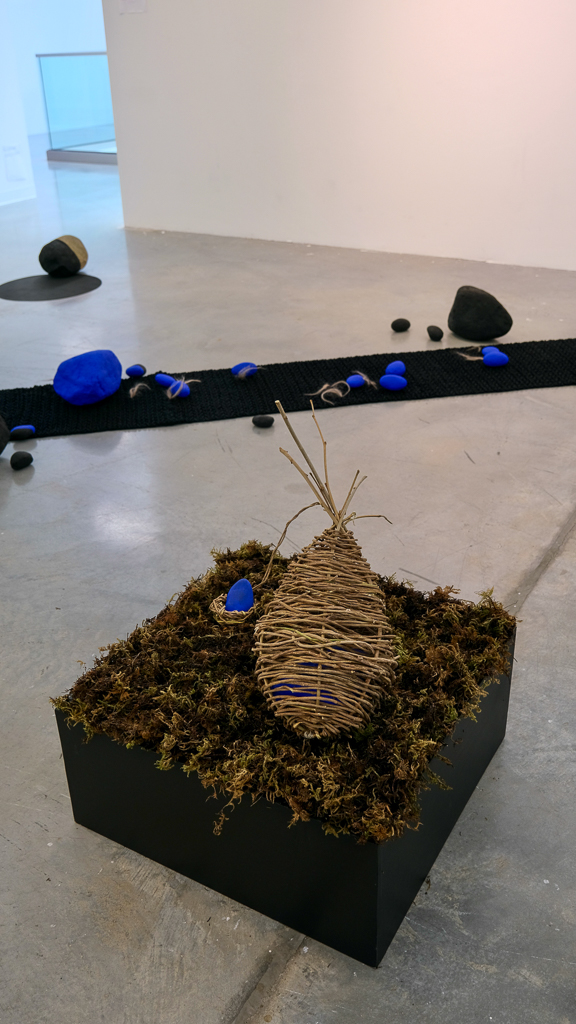
Out of Place is the third installation in the series Wounded Knitting. 7000 rows of rippling black machine knit wool fabric flow across the floor eventually unraveling into a tangled mass of threads about ten feet along the floor. The upper cascade of fabric is encrusted with fluorescent synthetically cast Red Belted Polypores (Fomitopsis pinicola) and Turkey Tail fungi (Trametes versicolor) found on Gabriola Island. Cast rocks and pebbles positioned along the flow of the fabric on the floor, are all painted with flat black and intense flat blue paint. Tufts of my greying pandemic haircut are hooked into the knitting.
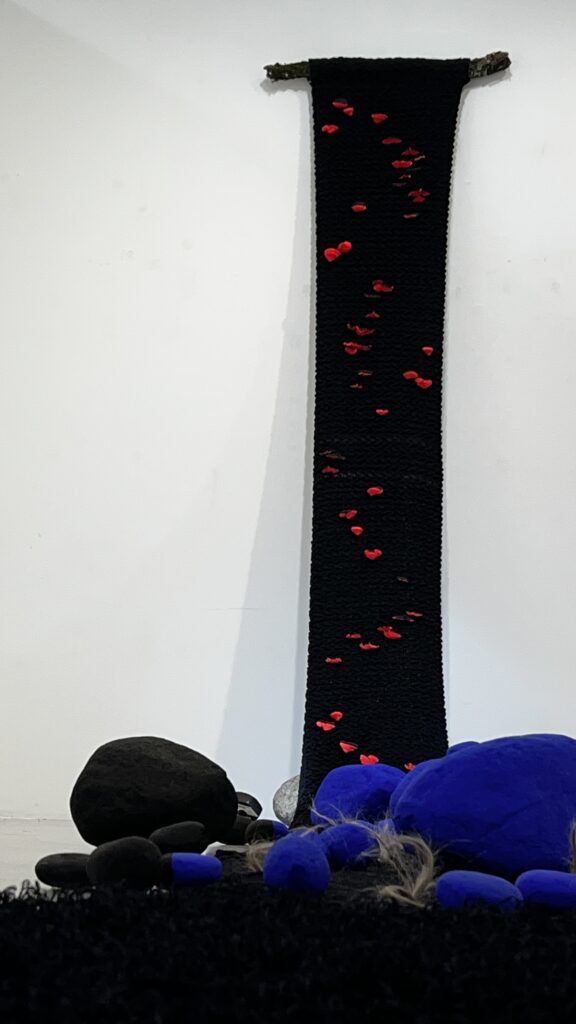
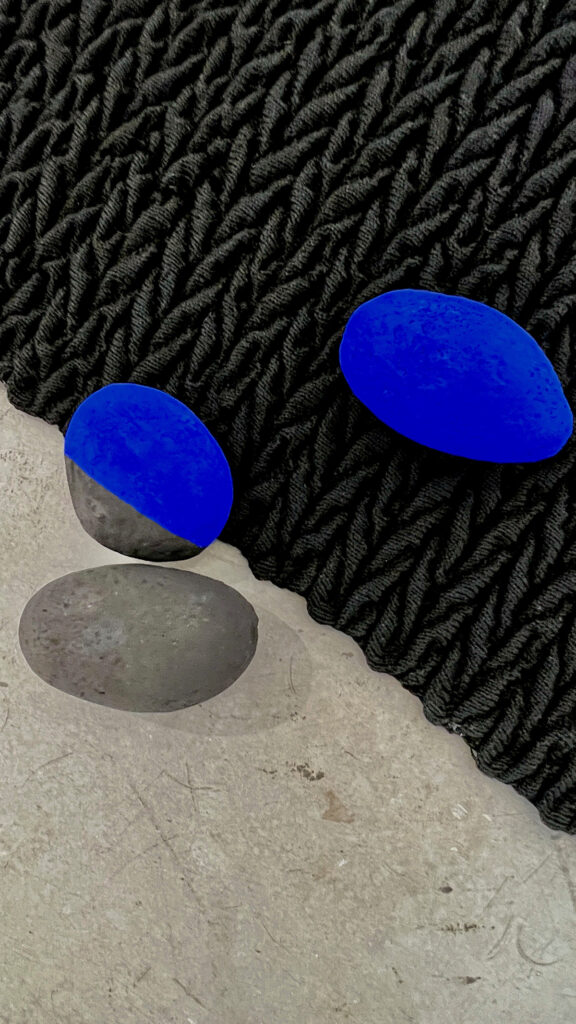

Statement
Is not life an intimate connection between belonging, place and time?
A flow of shadows and gusts of wind.
I work, age, connect in a tangle of threads as time flies past in silence,
always moving, always changing
the sum of all the drops and evanescent ripples
riding a passing breeze or tumultuous gust.
Always melding into one another towards a tangled destination
where gravity is not right.
Nothing can be done in isolation.
A realm of intertwining nanoscopic networks,
transgress millennia of fires, floods, and ice.
Invisible oscillating strings and mycelia
metamorphose burnt magma into nutrients of life
labouring to hold the future up
between space and time.
Fungi, the immortals,
selflessly, selfishly reclaim the existing
so others can draw vitality from the ground.
Her network of threads preside over rebirth,
wondrously recycling death back to life.
I remain entangled in a primordial landscape
and river of conceits and crisis.
A ubiquitous matrix of unresolved tangles
and extracted nutrients looking for a future.
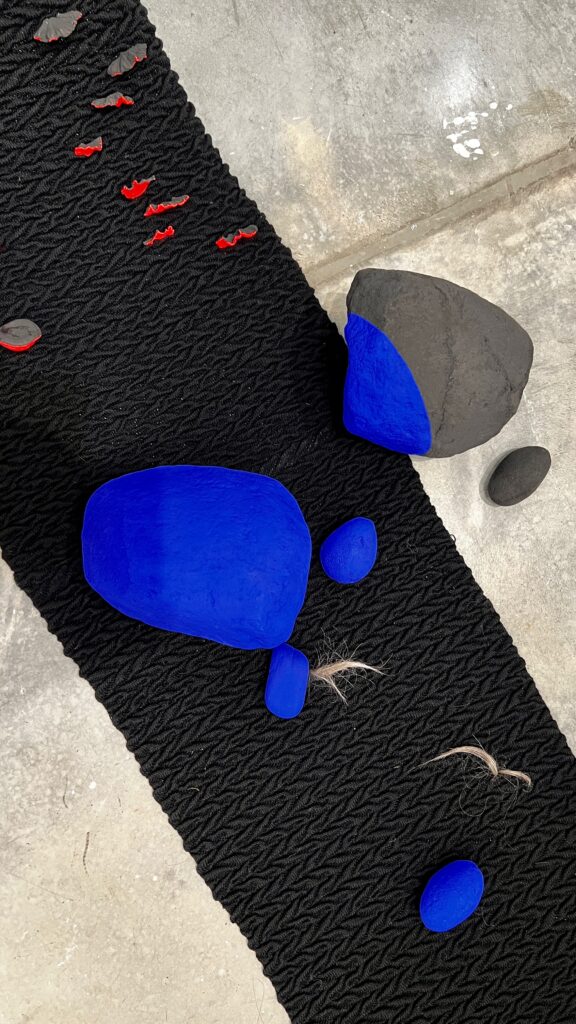
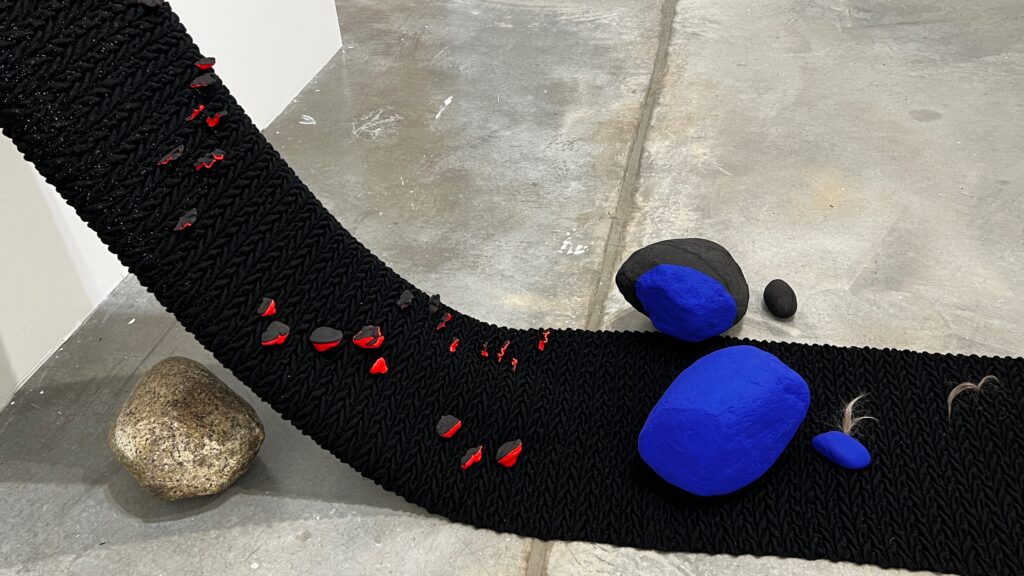
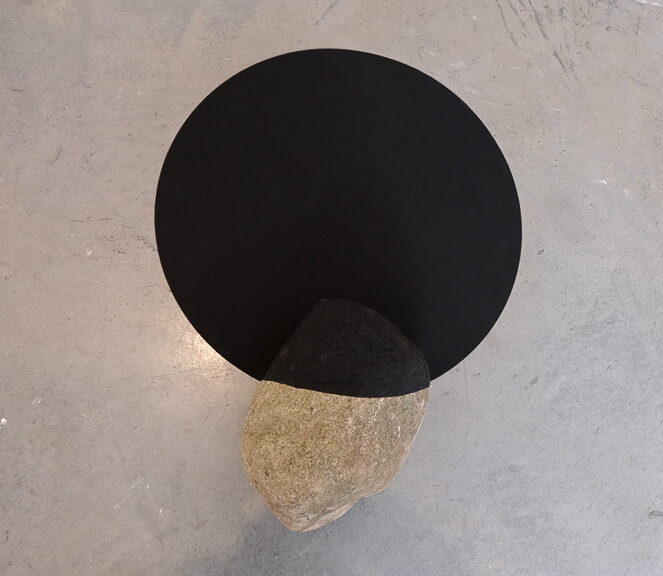
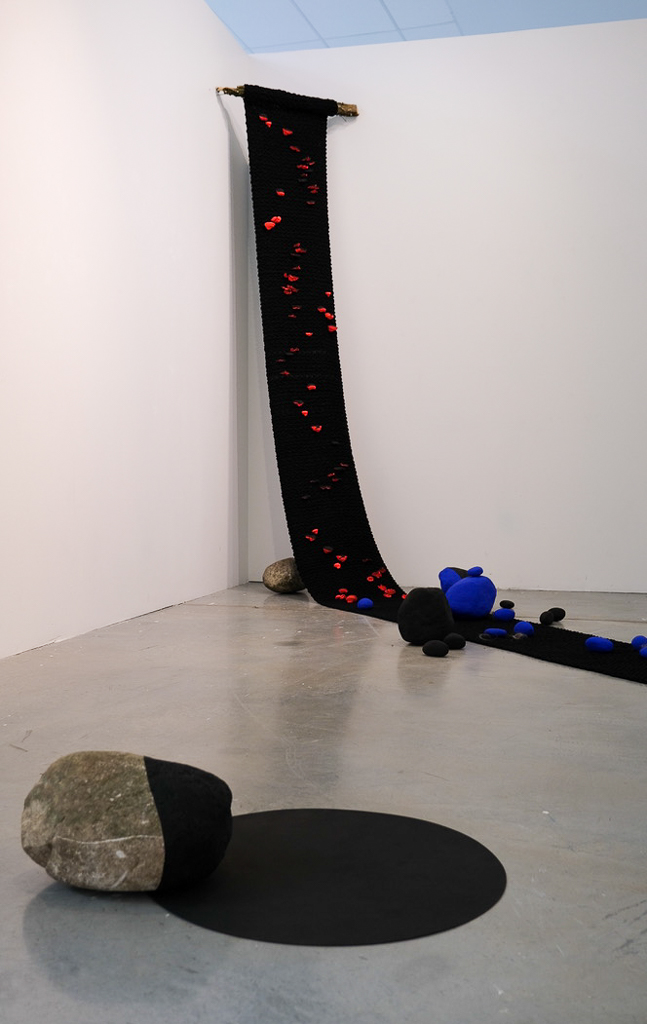
“You say I am old, old as the earth, as wicked as the night, and as wise and powerful as the sea, that I was there at the beginning of time to ring in the first sun, the first monster, the first man.”
– Kat Sandler. “Yaga”
# 2 | Spring 2022
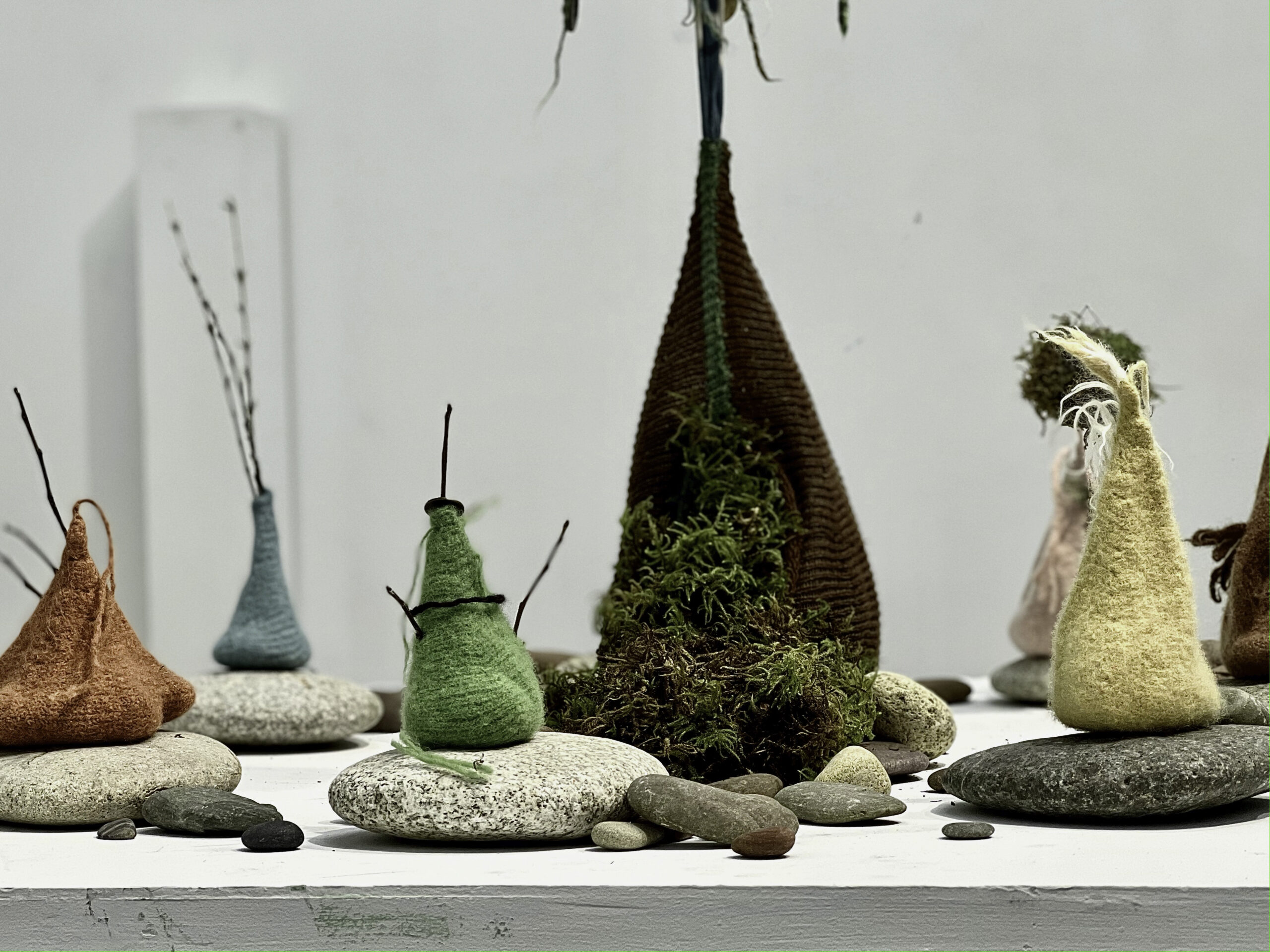
SEVEN SEEDS
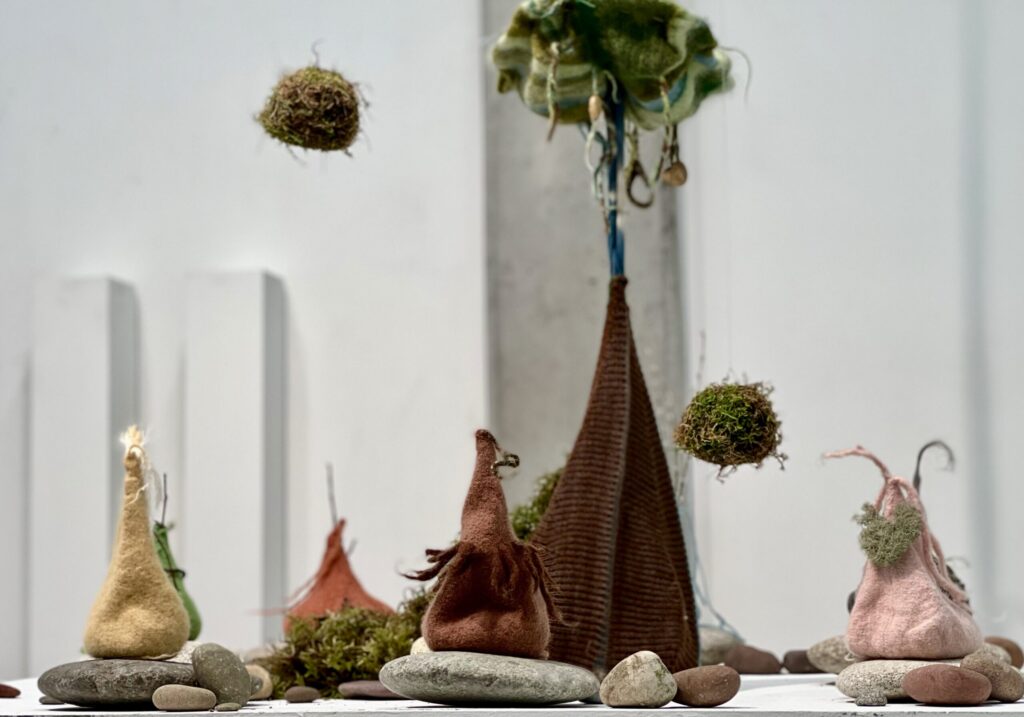
Materials
Wool, homegrown and locally sourced natural dyes. Silk stainless steel yarn. Pebbles, moss, fallen treasures – lichens, seed pods, apple and willow twigs, wool jersey. Homemade antler button, found beads.
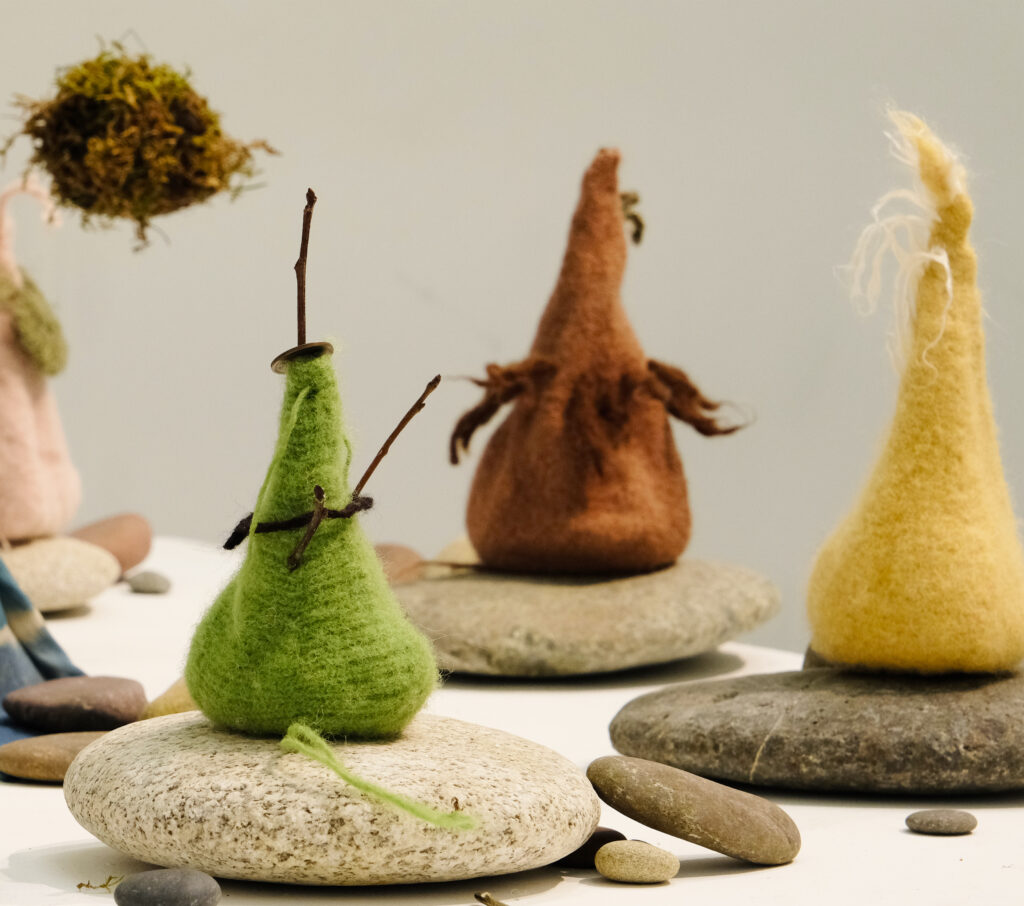
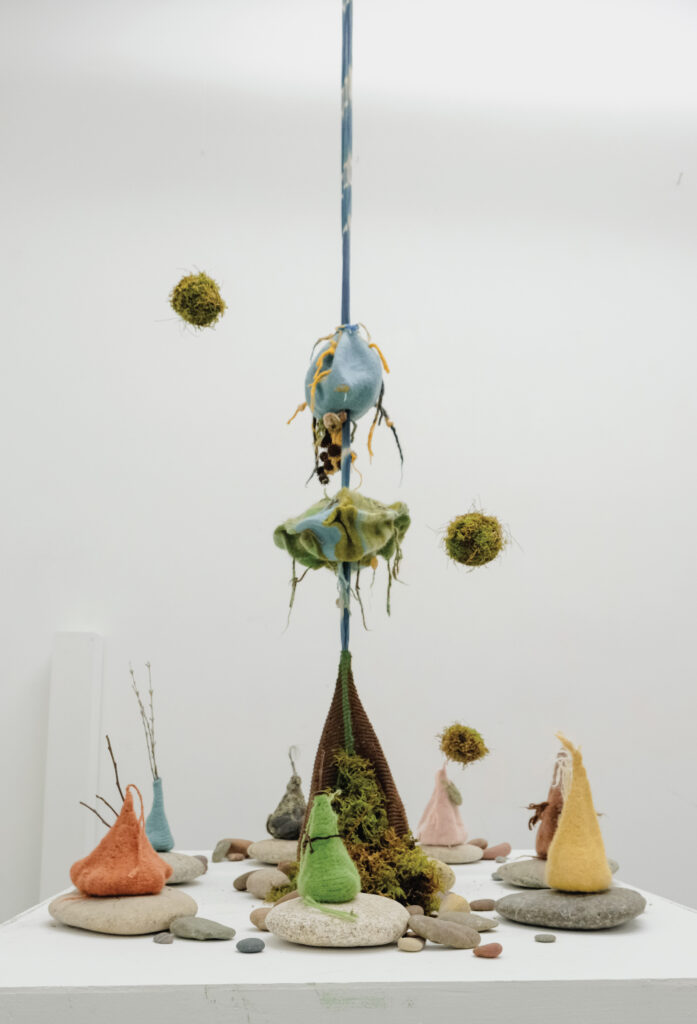
Statement
Seven Seeds , the second in the Wounded Knitting Series, is a community of woollen characters made from felted wool hand dyed with garden and neighbourhood sourced plants – indigo, walnuts, dyers polypore (fungi), St John’s wort, madder, tea, and iron bits. There is a close connection between the ancient art/science/magic of dyeing, herbal medicine, agriculture, and cooking, traditionally the work domain of women. Developed in Central Asia and Siberia, strong, warm, durable, and absorbent, felt predates spinning and weaving. It is a material that implies domesticity, domestication and coexistence between animals and people. It adds strength and structure to the characters in Wounded Knitting. Grandmother Tree channels energy between the cosmos and earth wearing colours of ice, sky, field and forest. She cultivates life, resiliency, alliance, and memory through her inner mosses. Each Seed in Wounded Knitting is a unique droplet perched on a smooth rounded river rock with a pebble felted inside to anchor it on its little sphere in the life circle. Like mosses, these individuals cultivate an interdependent community, a tribute to the endurance, resiliency, energy and power of nature; cultivating life, nurturing growth, and honoring the role of death and decay in the continuity of life.
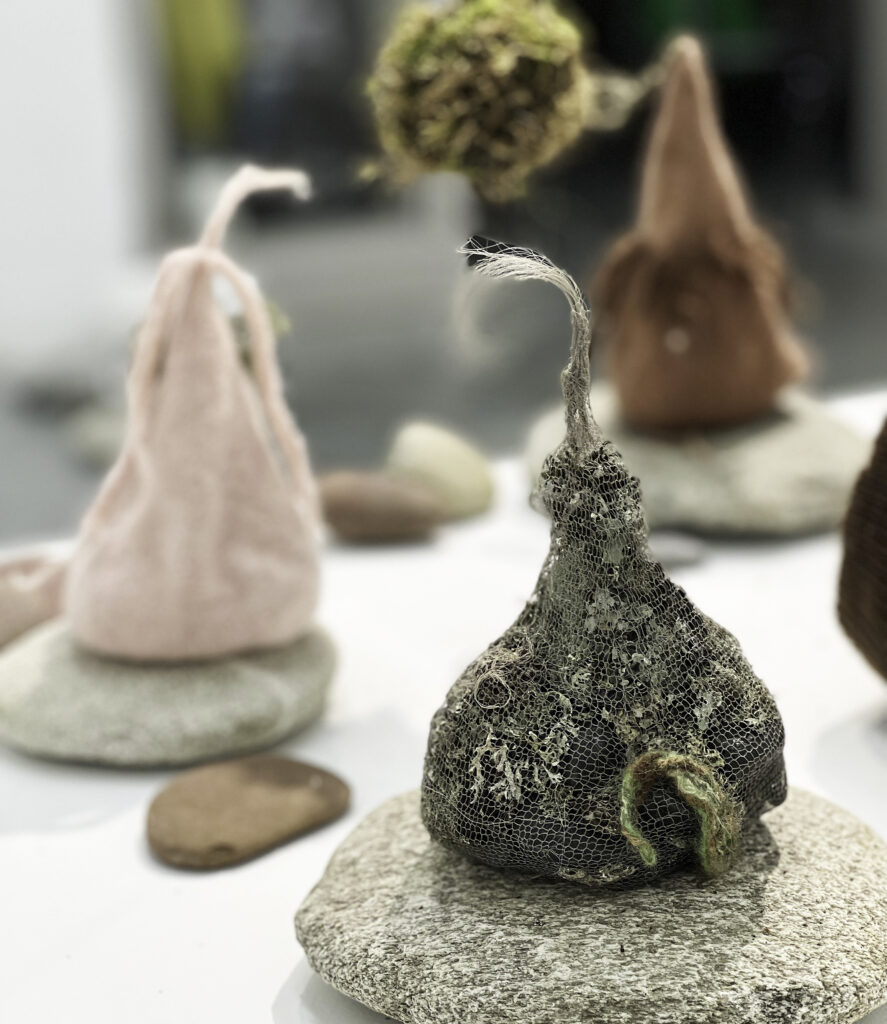
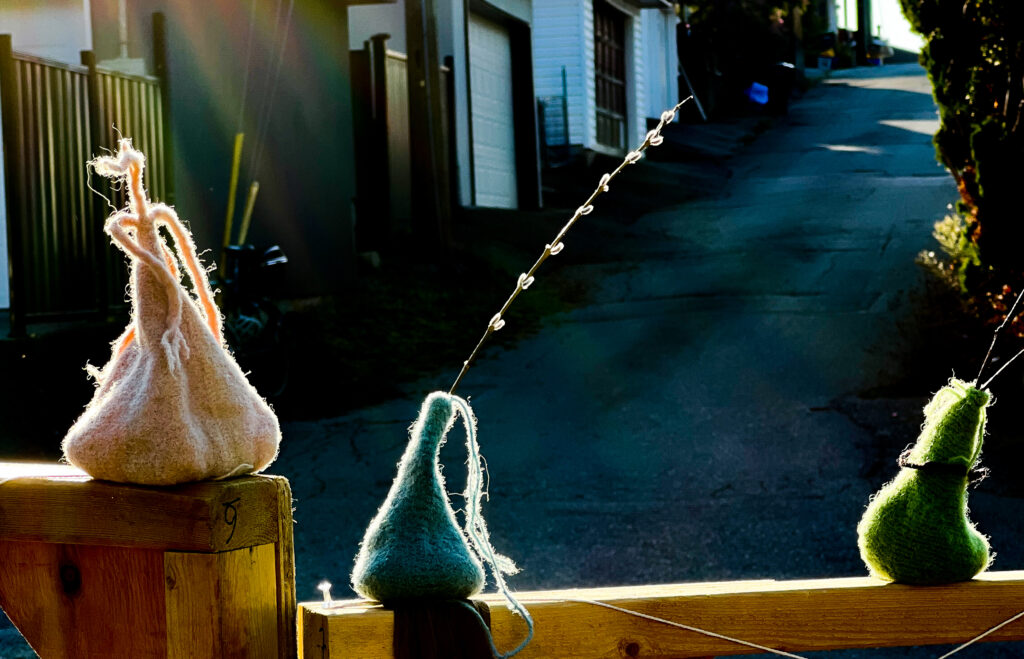
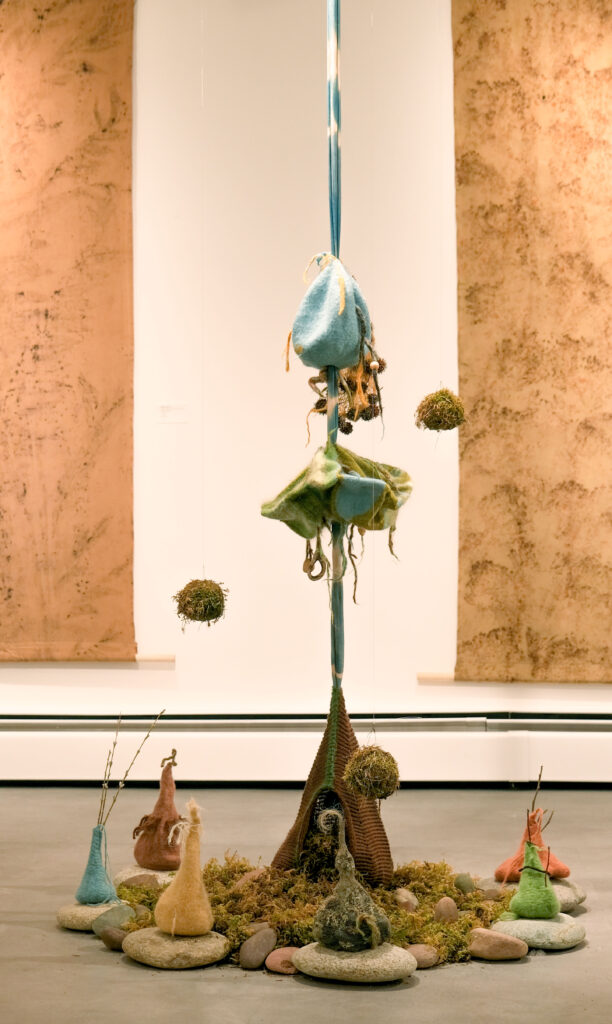
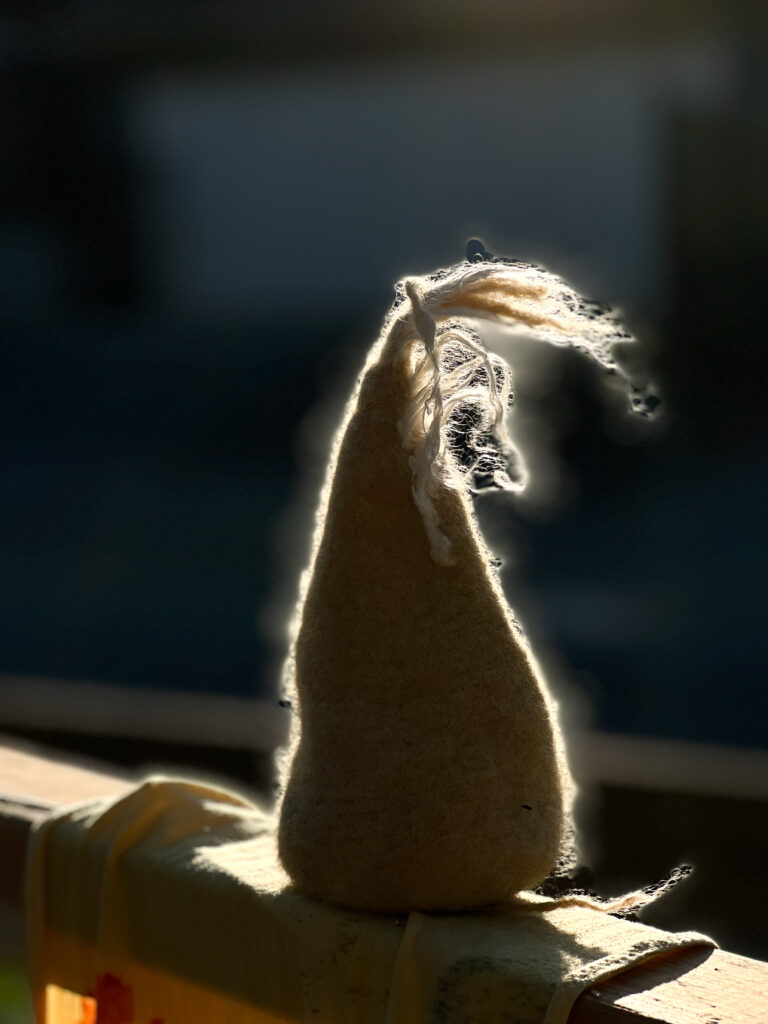
“Mosses are a model of how we should live.” ”
– –Robin Wall Kimmerer
# 1 | Spring 2021
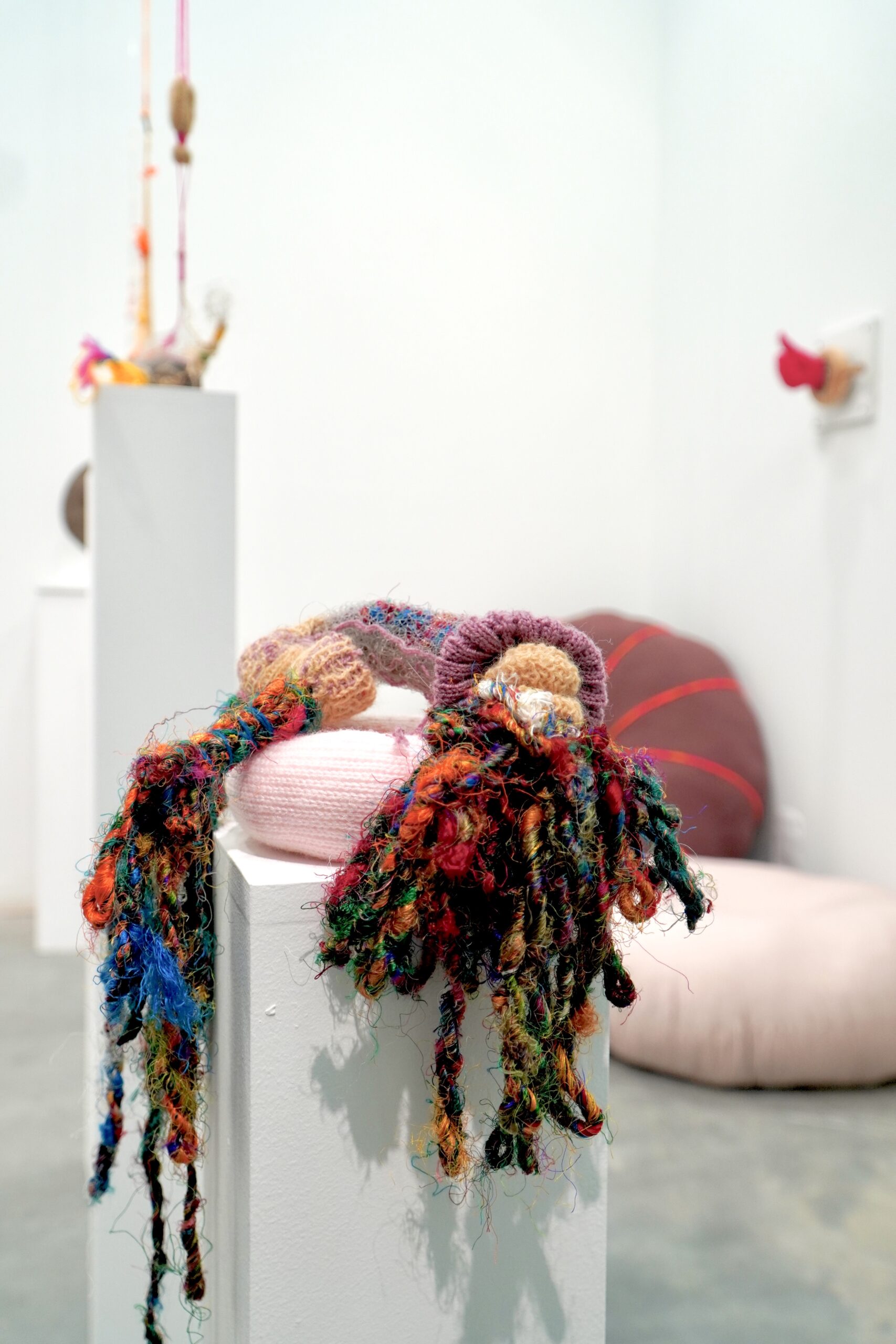
DARN KNITS, TORII, FOSSILS, AND AN EMOTICON
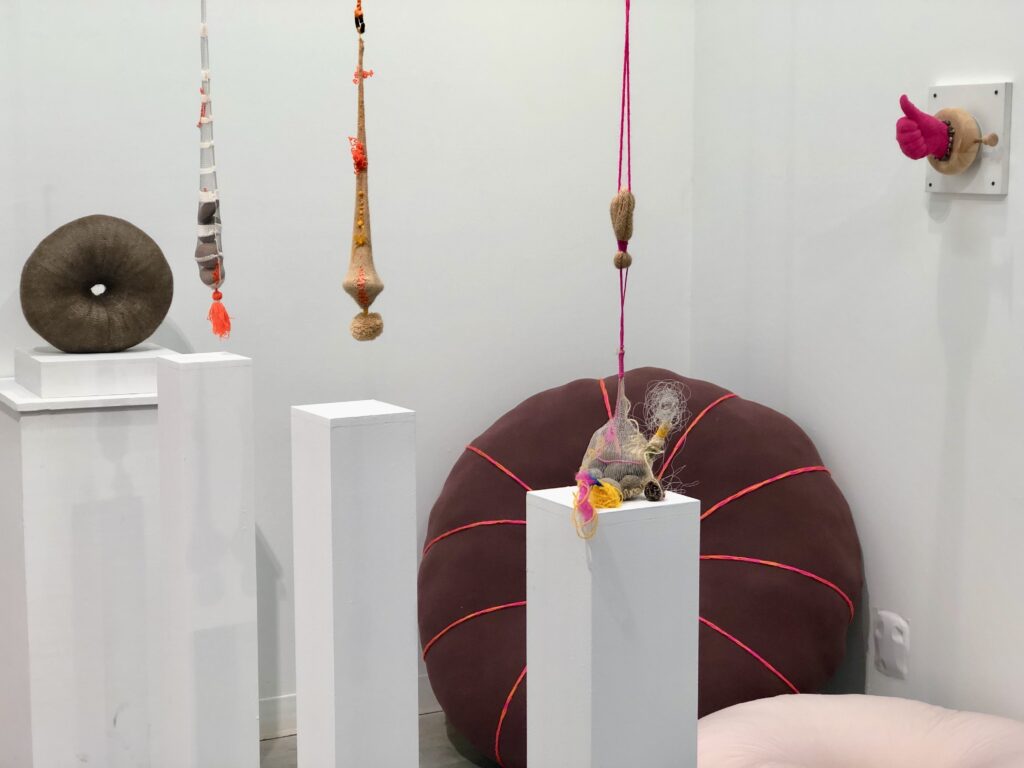
Materials
Yarn, monofilament, pebbles, resin, found objects from Elizabeth Fischer’s sewing box, feathers, plaster, wood, deadstock fabrics, ballons filled with dirty water.
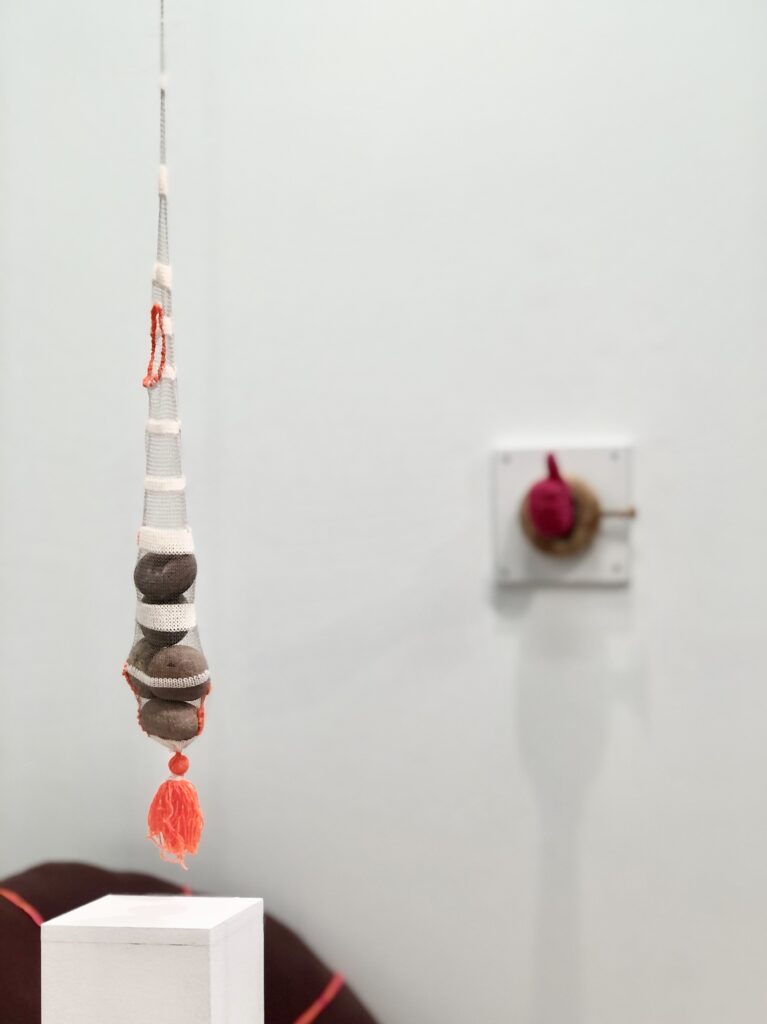
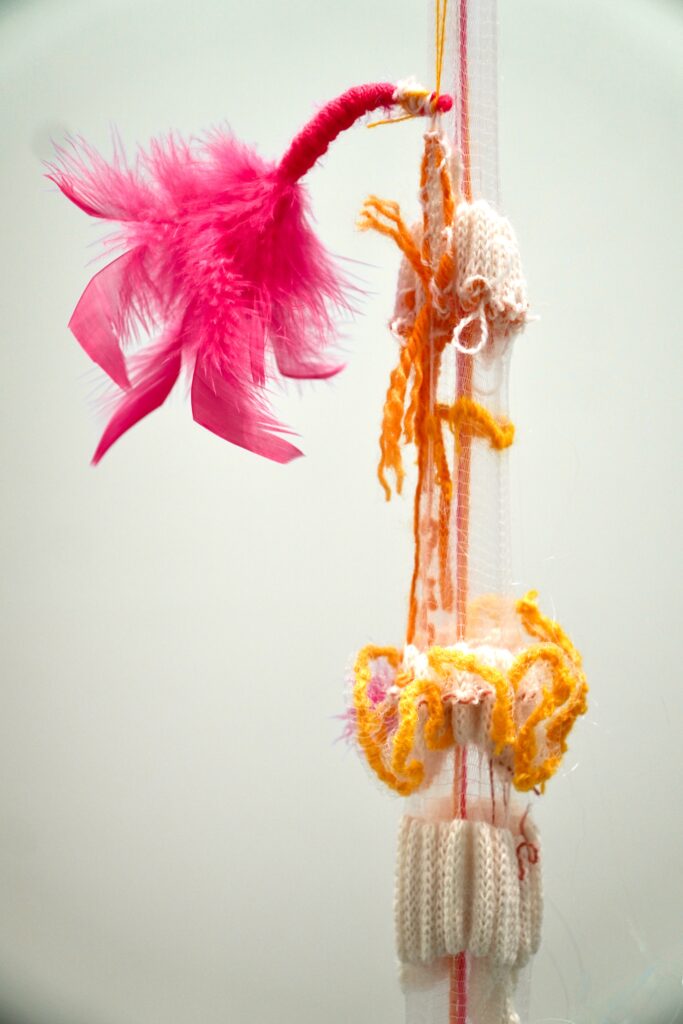
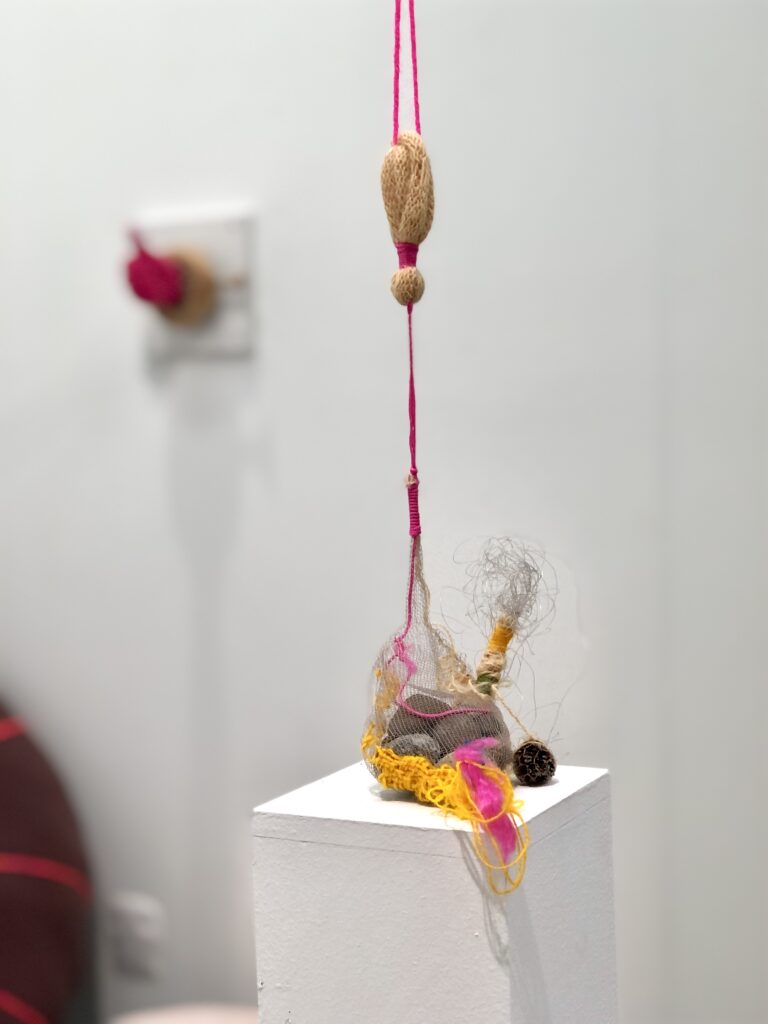
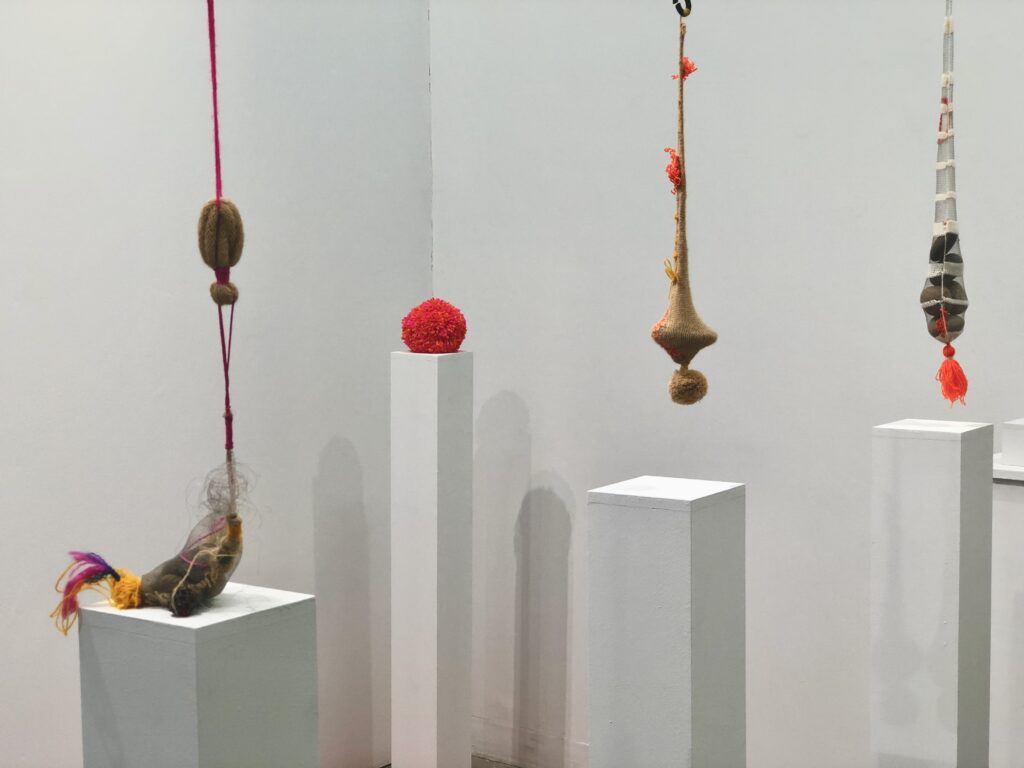
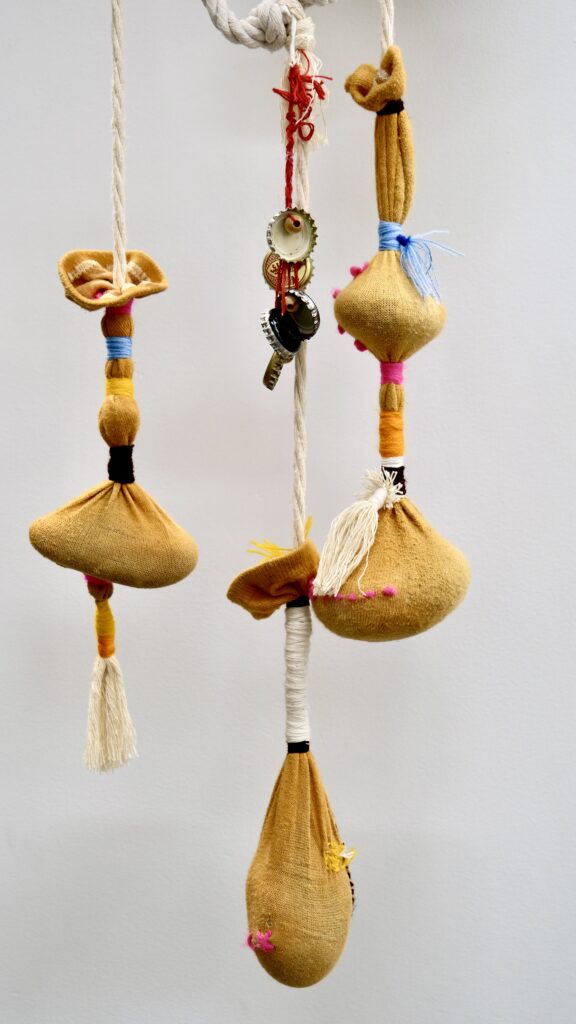
Statement
Darn Knits, Torii, Fossils, and the Emoticon, a playful excursion into the underrepresentation of women in the arts, is the first of the series called Wounded Knitting. A cast of characters created out of machine-knitted scraps of yarn, pebbles, plaster and resin cavort around the white box, the knit things never quite touching the plinths. The Darn Knits are machine-knit creatures, filled with rocks. Details on the knitting were the result of technical problems with the old complicated knitting machines that were turned into colourful darning opportunities of colourful threads. Darn Knits dangle in the air over plinths paying homage to knitters and textile artists everywhere whose work has been discredited or trivialized by the art world. An electric Pom Pom sits on a plinth surrounded by a tangle of threads because pom poms are generally underrated! A recent addition to the Wounded Knitting 1 is Moneybags for Inflationary Times, a grouping of old socks tied with cotton rope, dyed bright orange in home grown marigold flower petals, and filled with garden pebbles. Moneybags can be worn over the shoulder, and includes old bottle caps that add a jingle when you walk to make it sound as if there is change in the pouches.
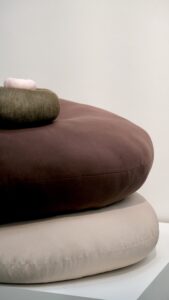
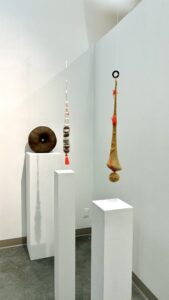
Four flesh-toned Torii warmly beckon the viewer to touch them, belying their unique geometrical forms. They reference the complex math and sciences historically required by women and those responsible for the tasks of reproductive work. The installation includes several glacial like resin Fossils encasing objects recovered from the sewing box bequeathed to me by the late Elizabeth Fischer, a talented Vancouver musician and artist who also enjoyed sewing, knitting and embroidery. The 3-D Emoticon, a plaster cast of the artist’s hand coated in florescent pink flocking, mounted on a turning device used on kitchen tables, requires manual exertion to elicit a like or dislike. It is a nod to handiwork and the unsung labour of women in textiles and the support between women nurtured through working together on domestic tasks, while at the same time a commentary communication actions we take on social media.
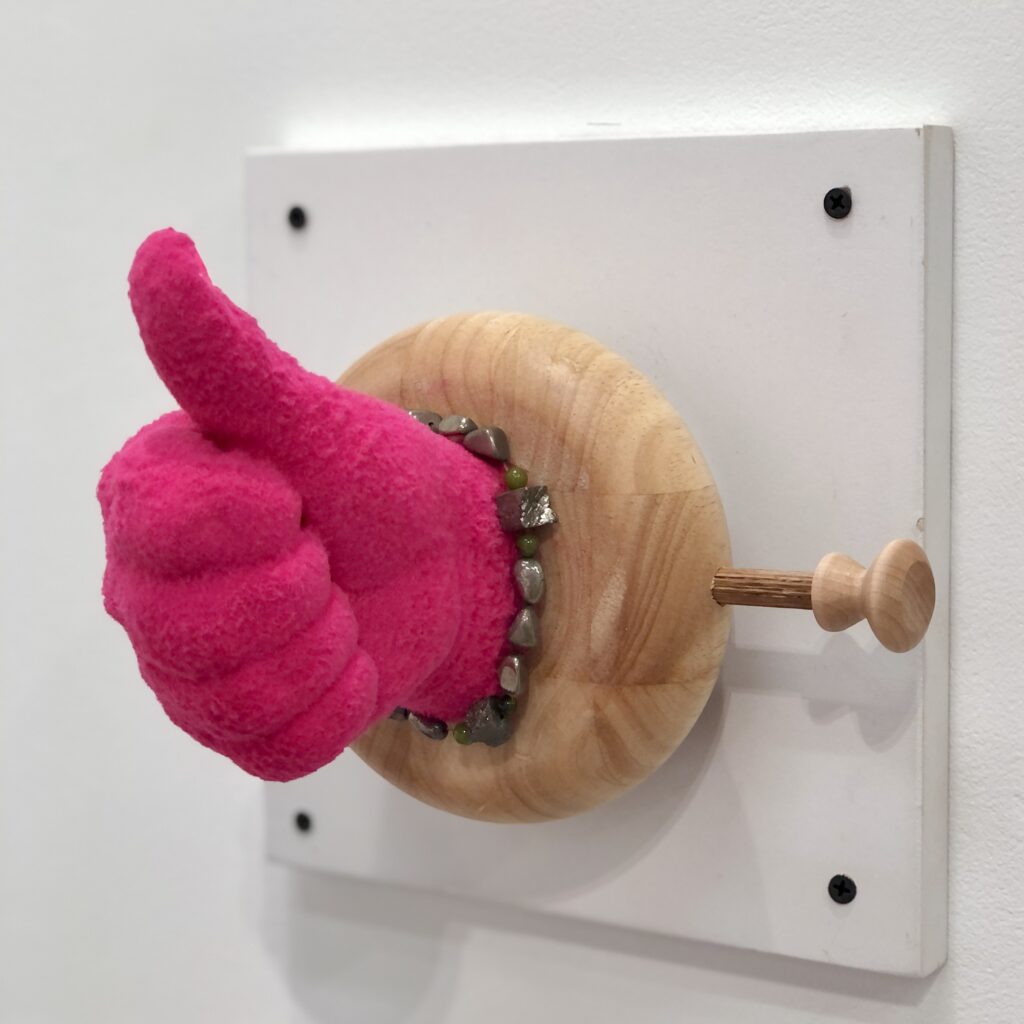
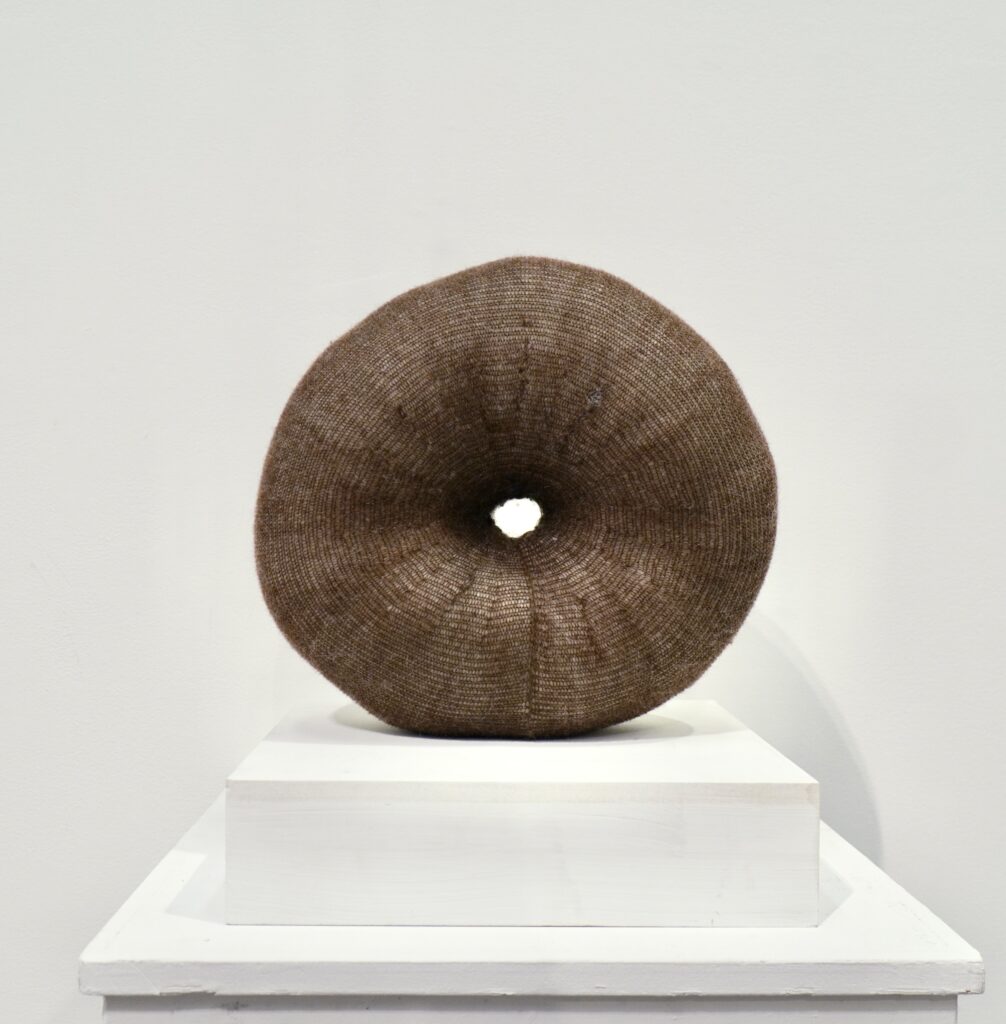
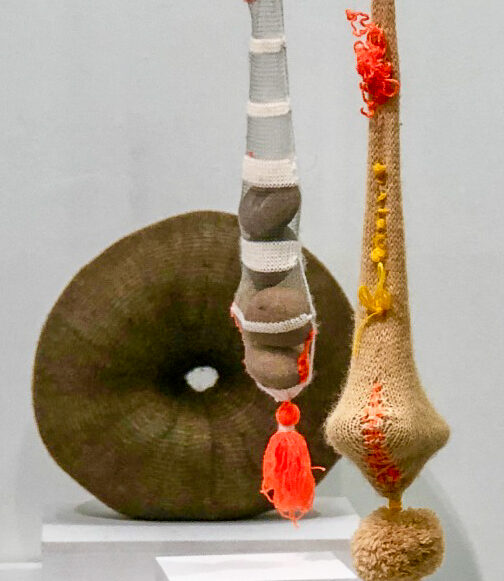
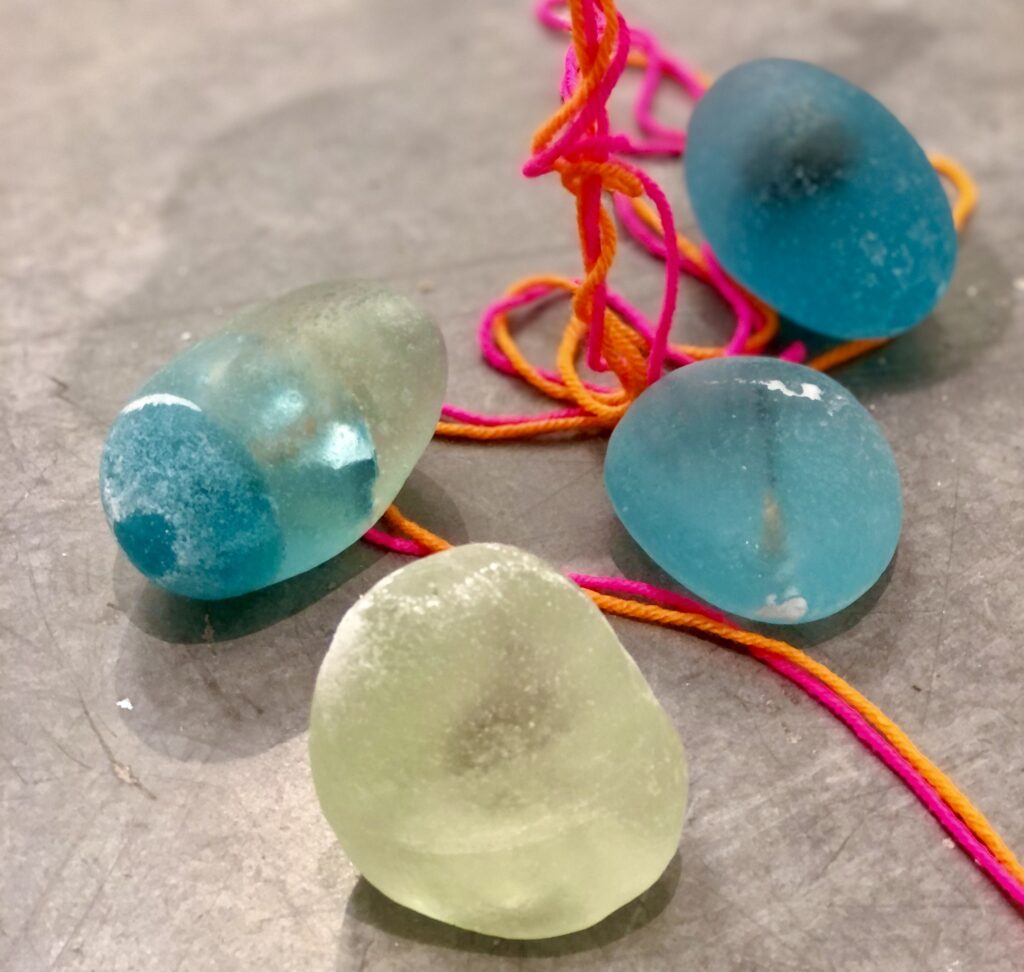
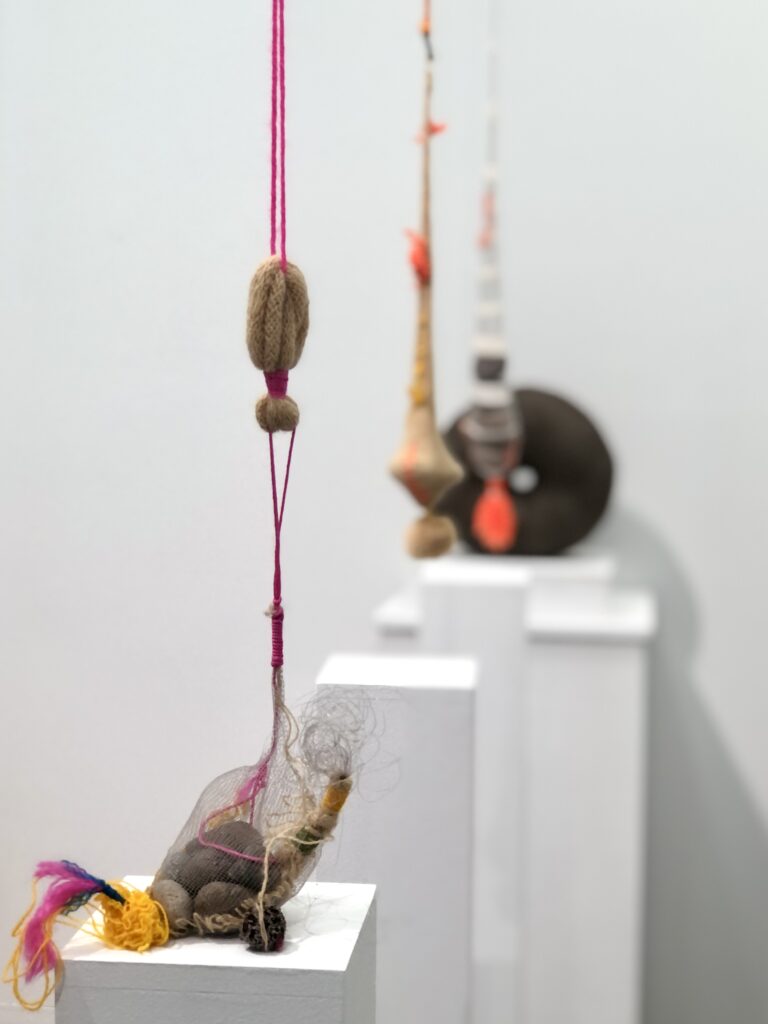
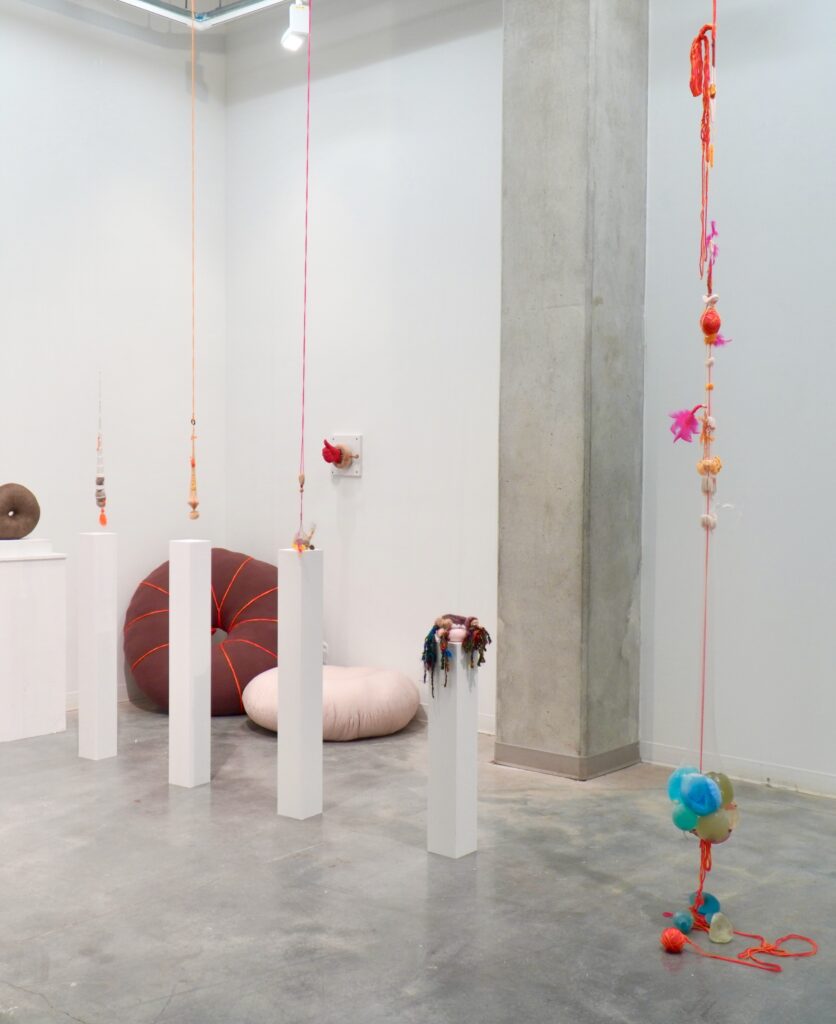
Other Work
Earth Socks, Fall 2020
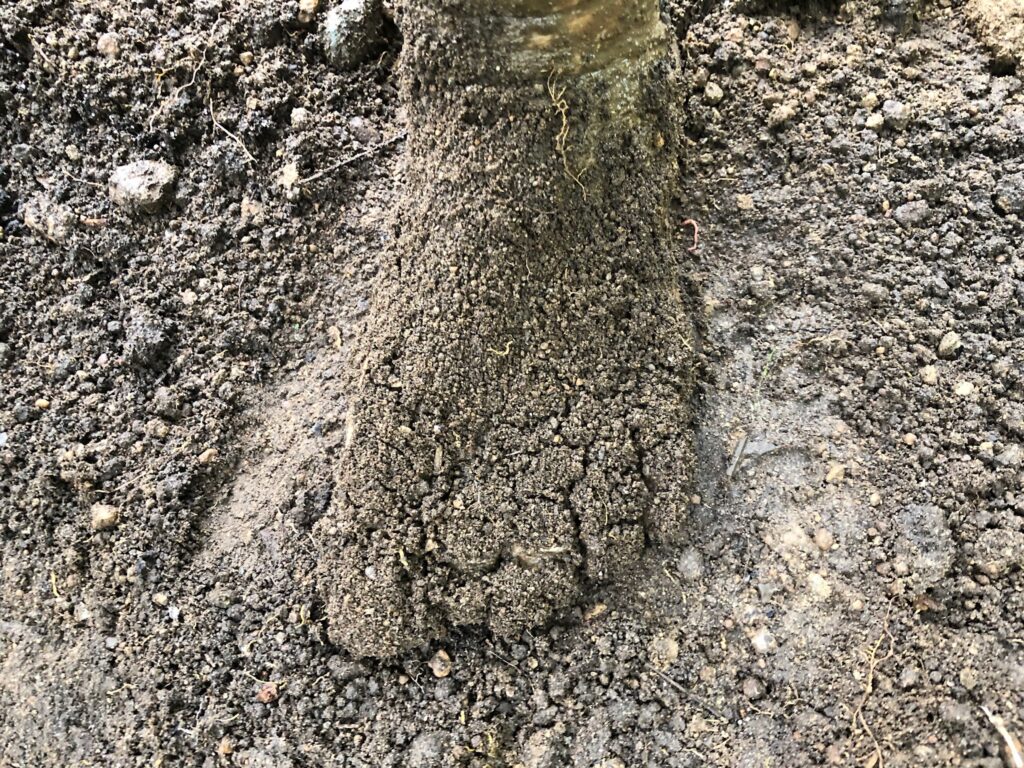
Earth
Socks
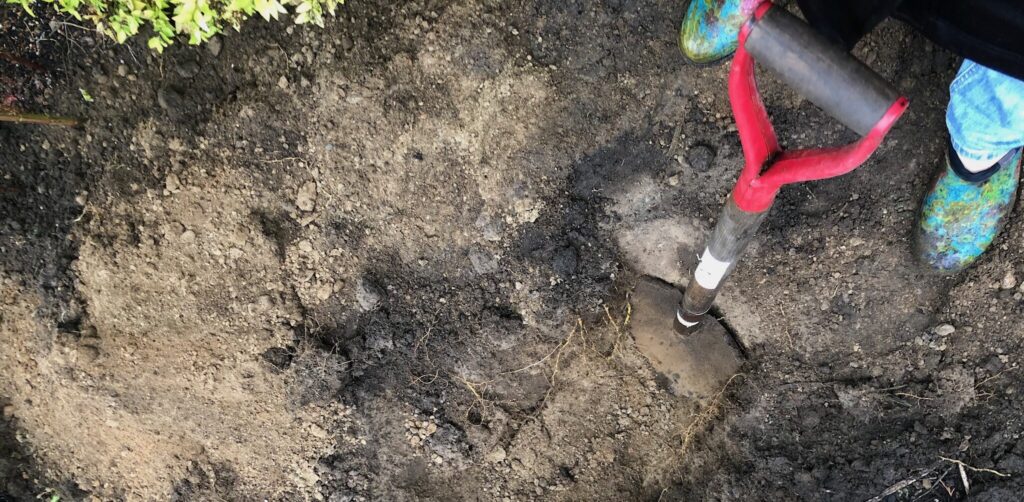
GROUND
thinking about place from the ground up
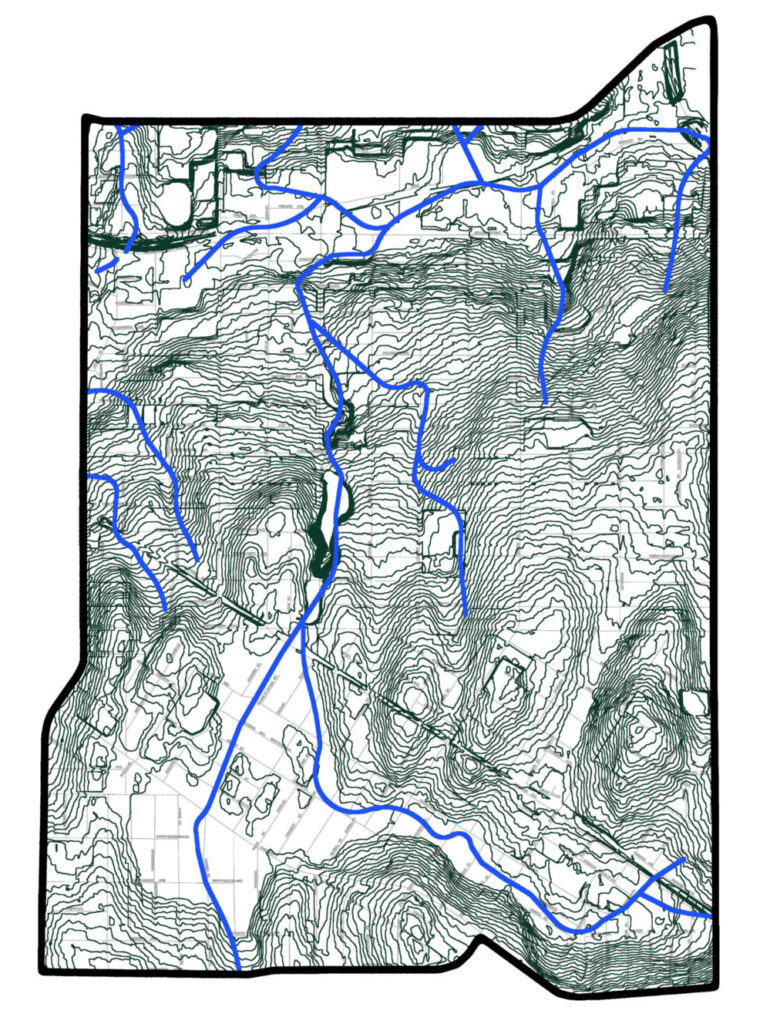
What is the base of any place?
Dirt. Topology.
A combination of tectonic plate movement and glacial erosion sculpted the Renfrew Collingwood landscape over millions of years. Most recently, (about 20,000 years ago) a massive 1500 meters thick glacier covered the lower mainland. Ice and water flowed from the Eastern and Northern mountains weighing down the landscape 350 meters below its current elevations. When the glacier started melting 11,500 years ago, the land began to rebound and the Southeast corner of Renfrew Collingwood, towards central Park, was one of the first places in the area to emerge from the sea. As the ice and water receded, fertile deposits of shell bearing marine silt and clay, sand, and gravel were left behind.
Until about 130 years ago great forests were all around. A lake stretched along what we call the Kingsway corridor today. This also must have laid down a layer of silty soil in the area.
In search of past secrets, I dug a hole in the ground. Was this the soil from the bottom of a forgotten lake? What creatures have been here before me and returned to the ground?
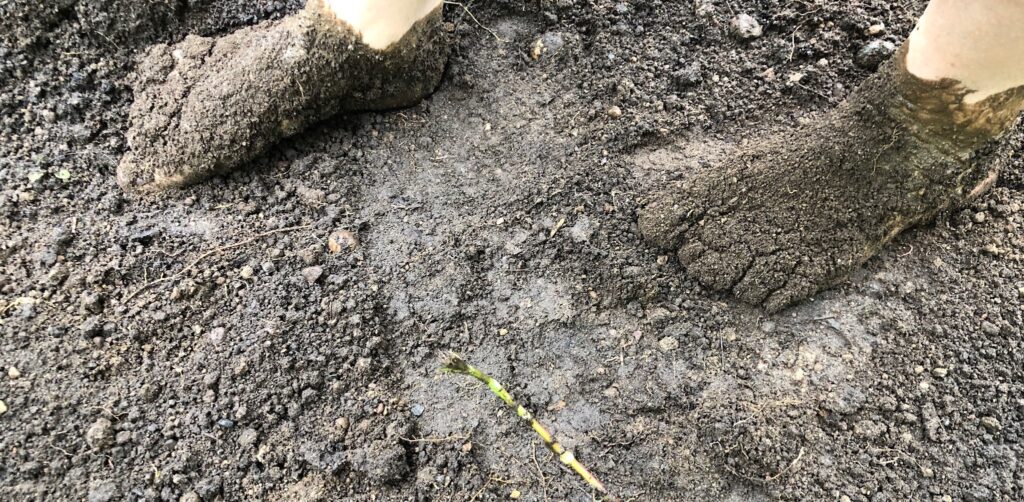
Things grow and they die here
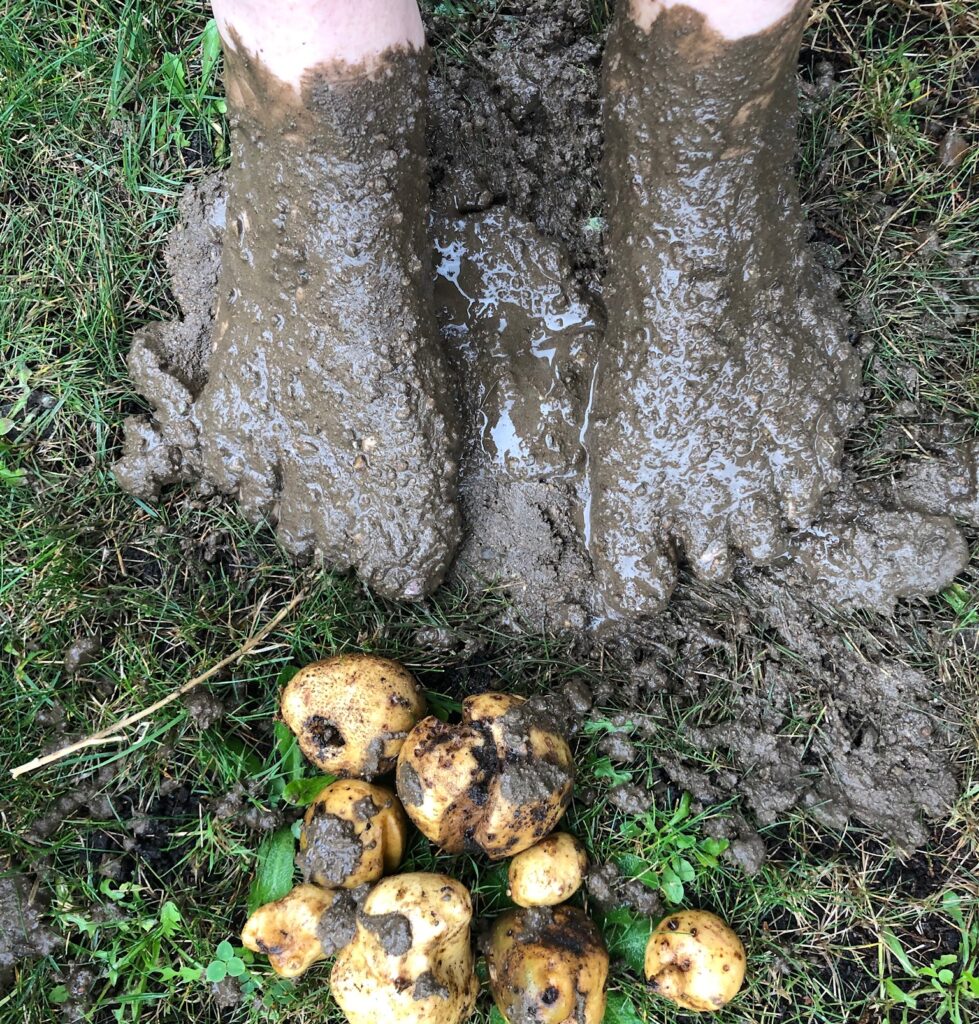
I collected the stony clay in a bucket and mixed it with the rain spreading the cool mud on my feet. The earth was not cold. As I walked, my feet disappeared into the ground. Someday all of me will.
jump and run, Fall 2021
Composite
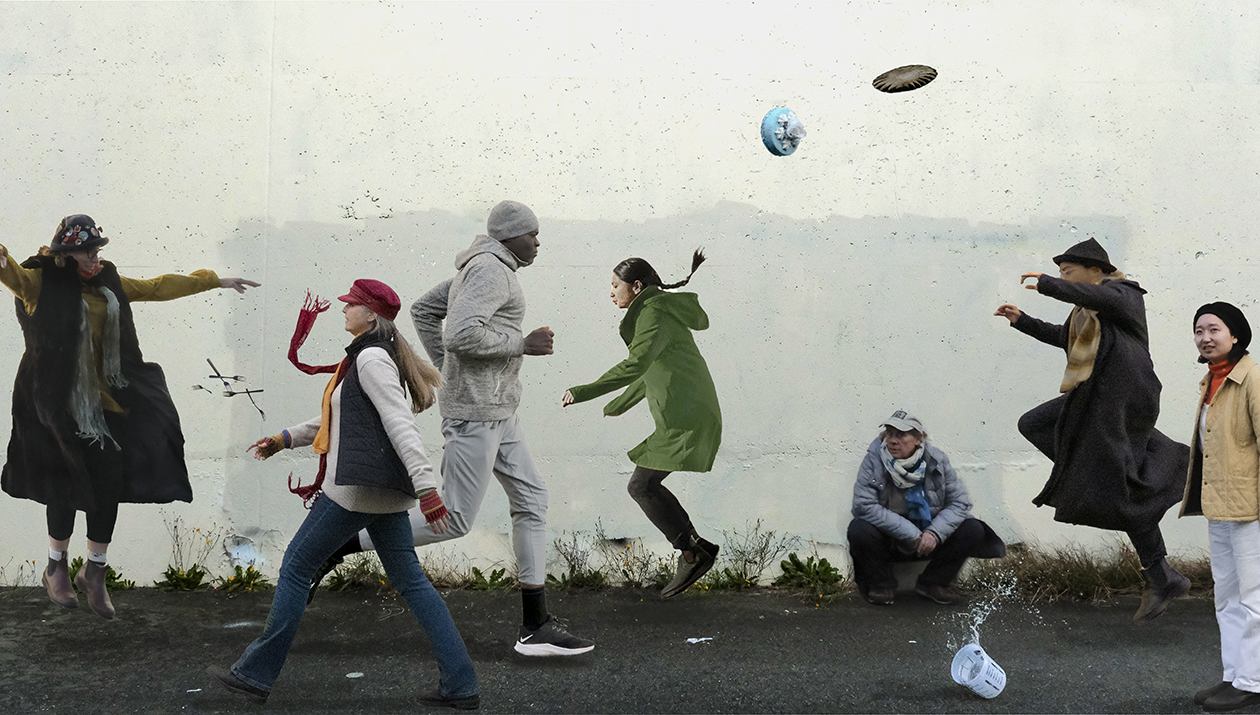
Eight friends, a bucket of water, six flying forks, a cake, a wall in East Van, and a camera negotiate a neighbourhood void during lock down.
Crecien
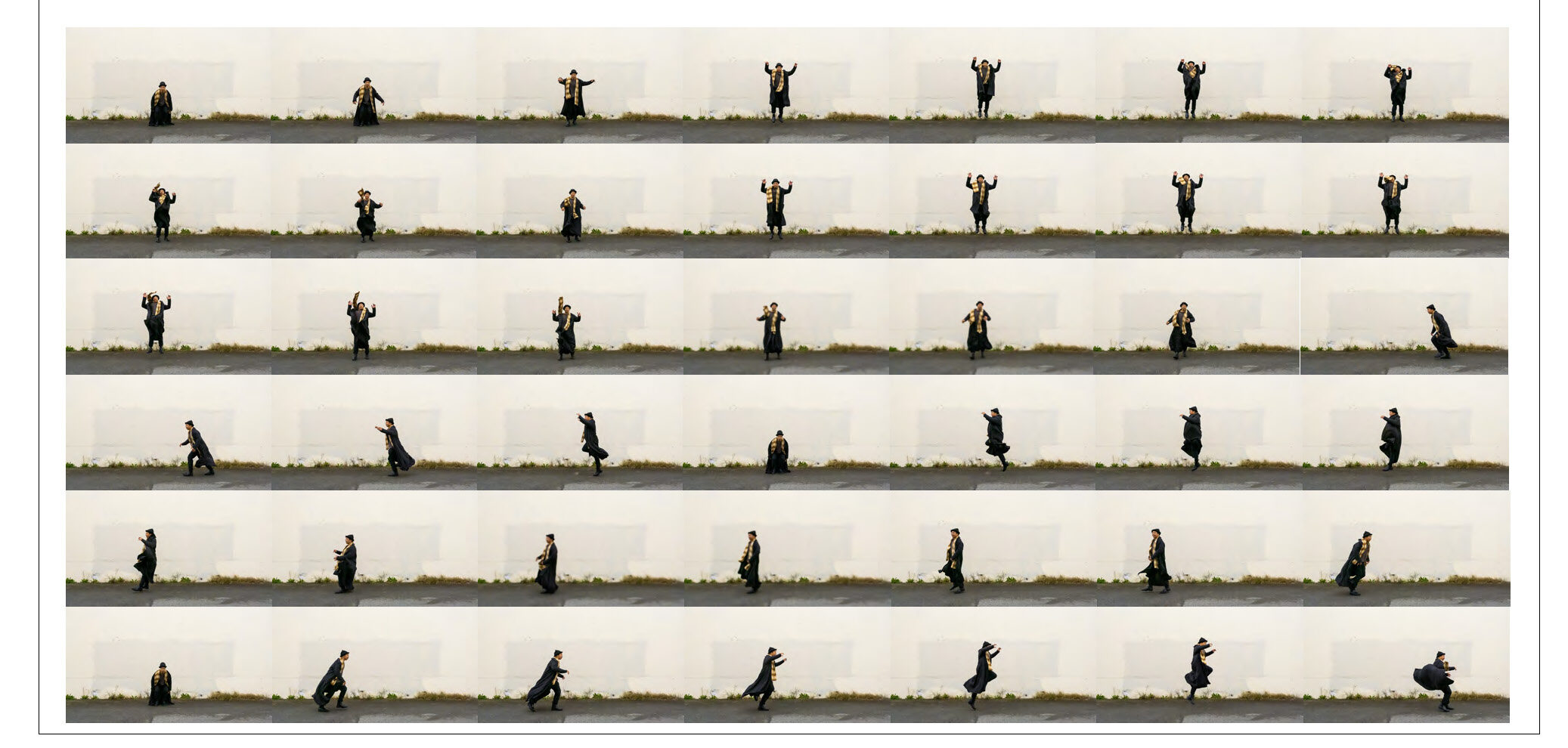
Crecien wanted cake
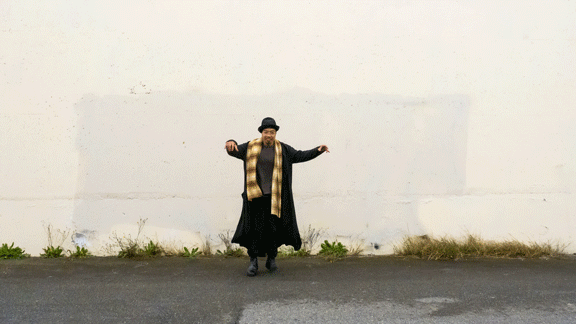
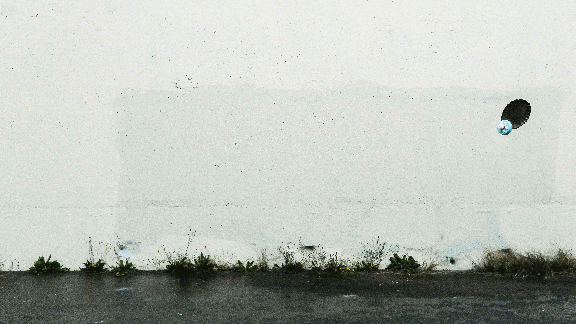
Misaki
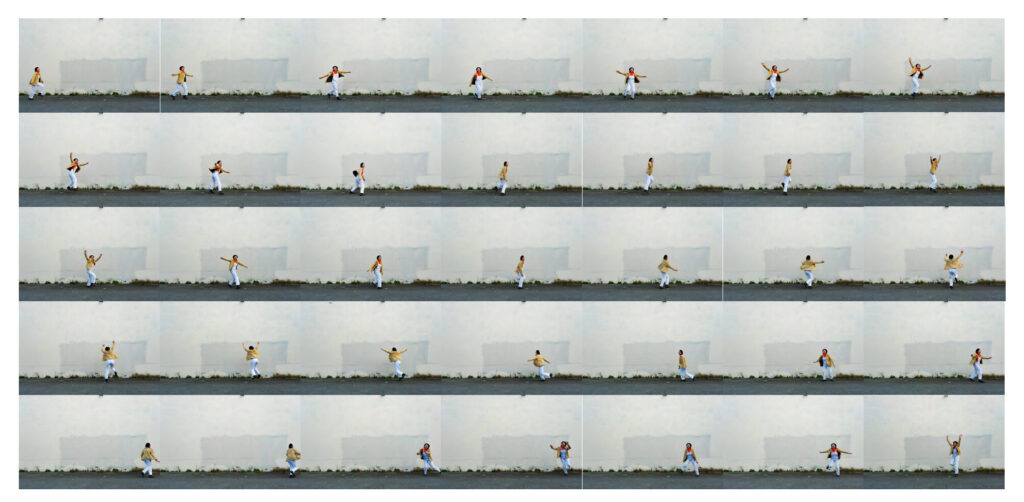
Misaki threw a bucket of Still Creek water
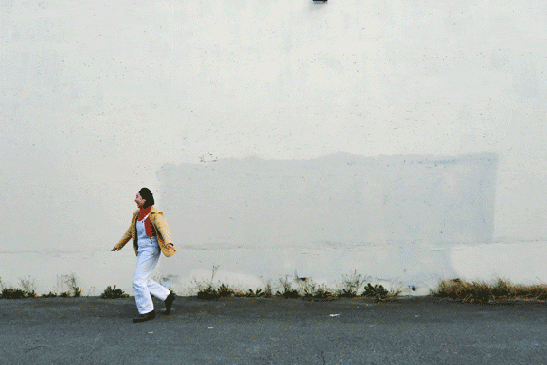
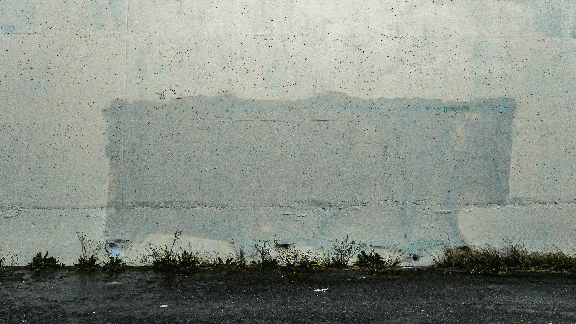
Alexis
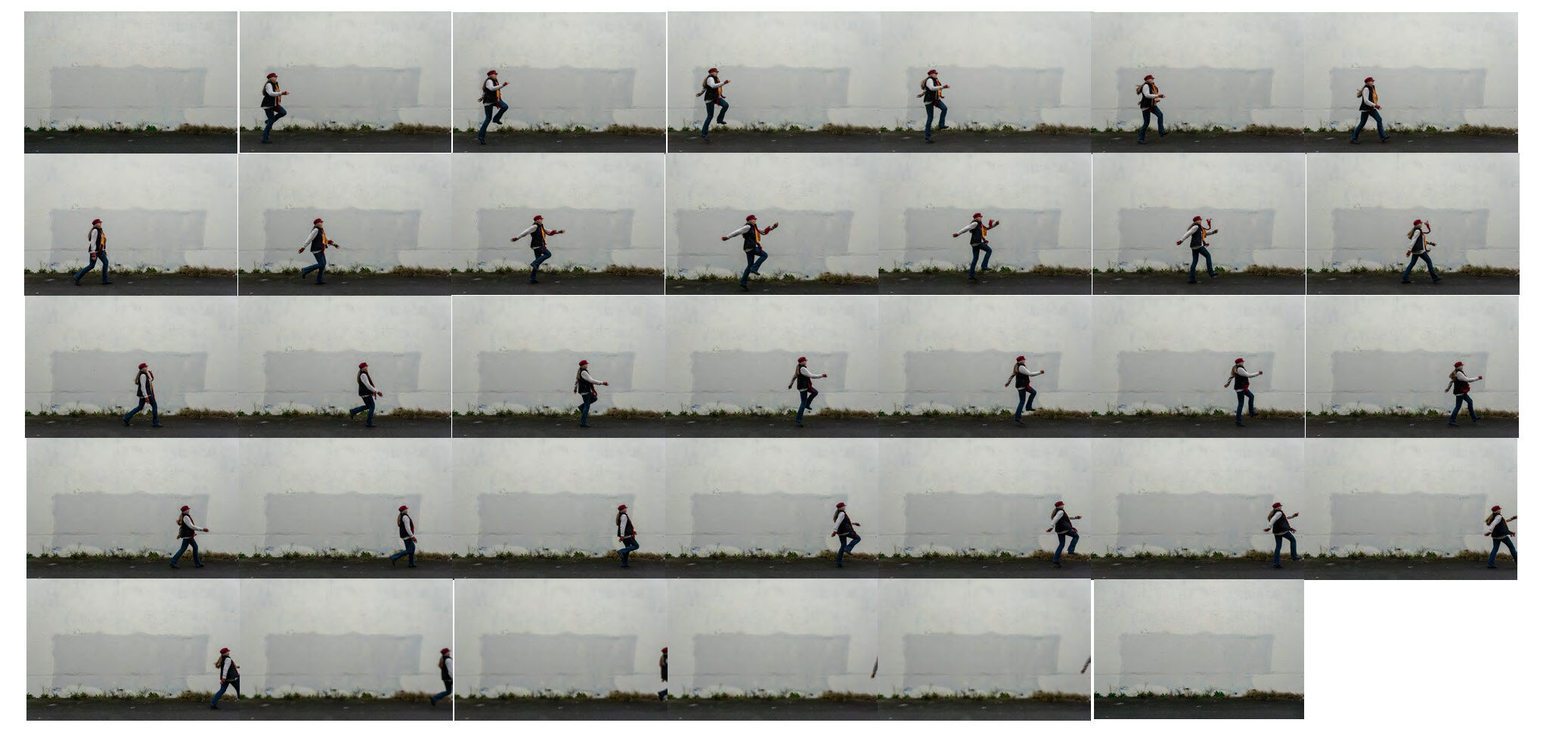
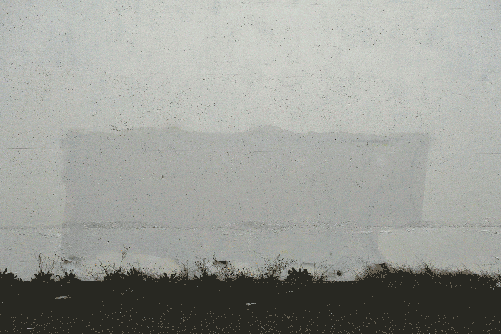
Alien Livingroom, Fall 2021
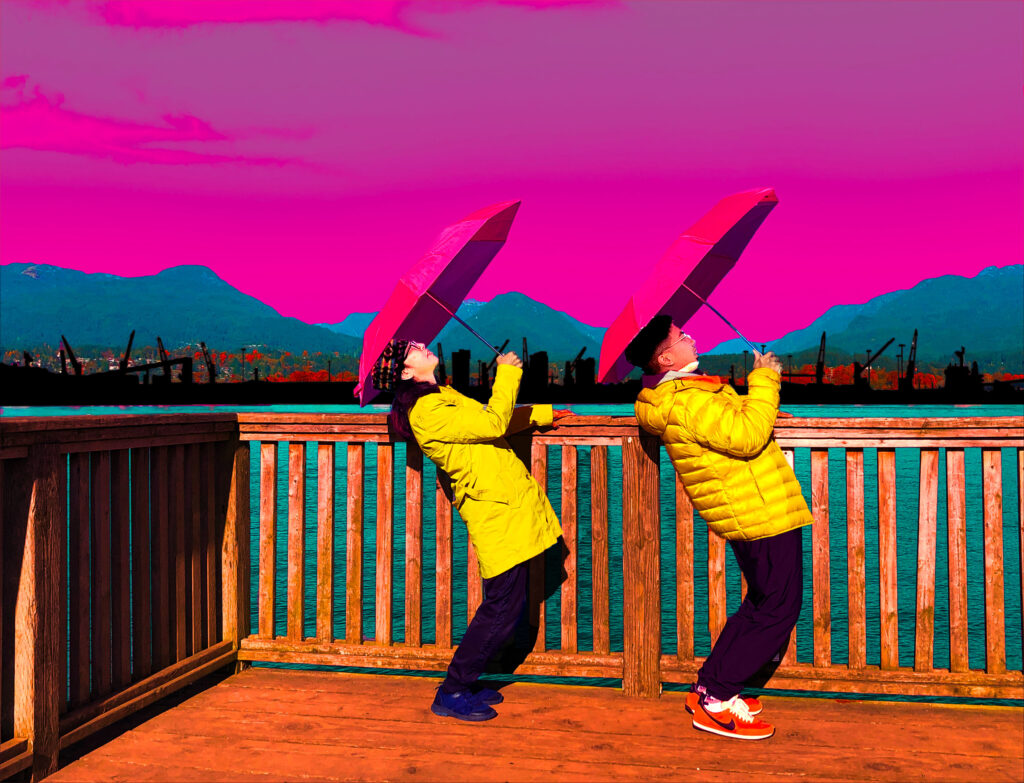

alien livingroom
Twenty Twenty One: Sixty One, Sixty Two
Six Feet On All Sides. Acid Free Series
Still Here. I think.

Sur-reality
Acid sky
Bleeding rocks
Polar force fields
Lies
Unmute
Out of order
Its okay to feel okay
Relentless
Ugh
Changes we’ve made
Sometimes for the better
Daily search for little wins
I can’t breathe
Missing you
Be kind
Be calm
Be safe
Pinch myself
What is truth , who’s truth
If not now, when
